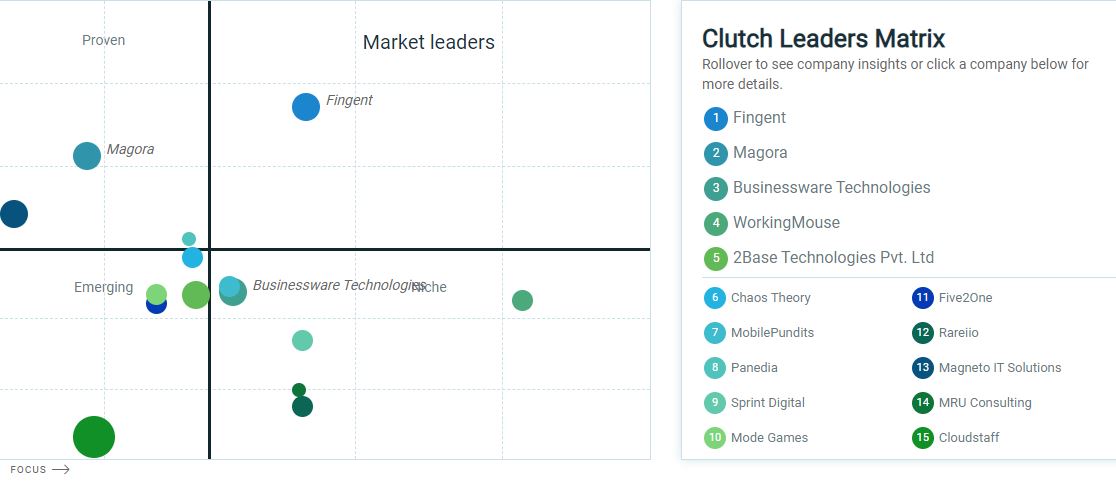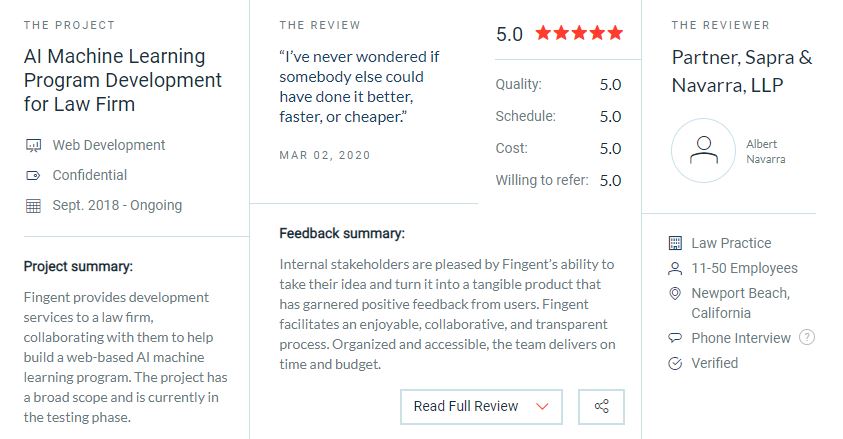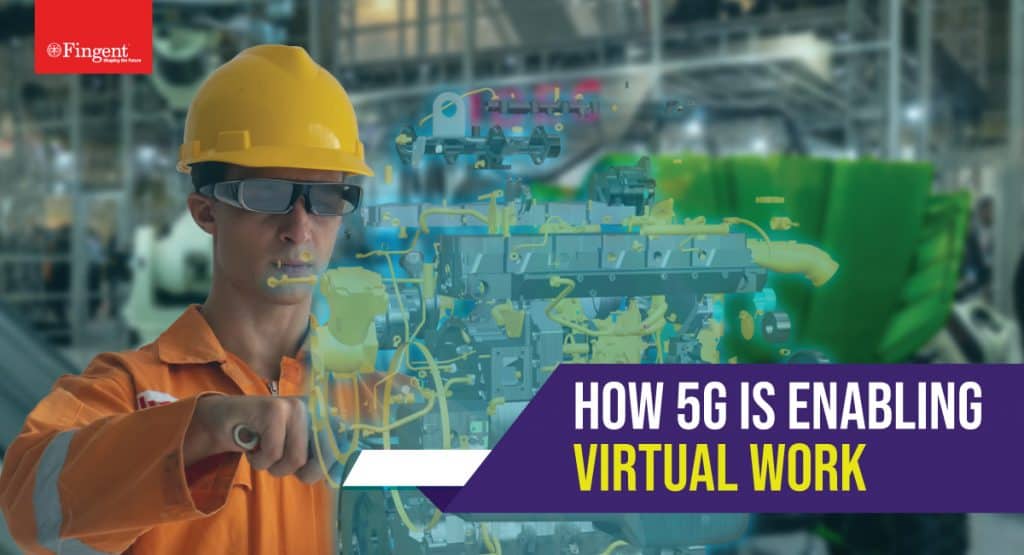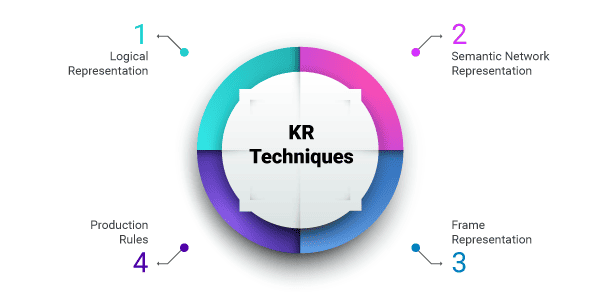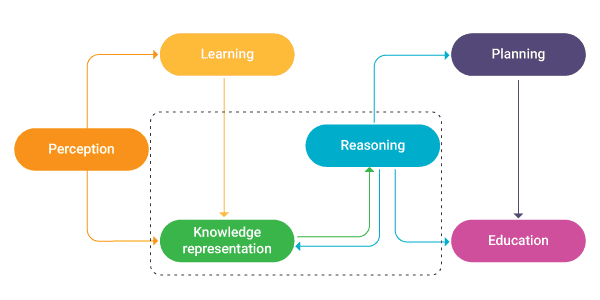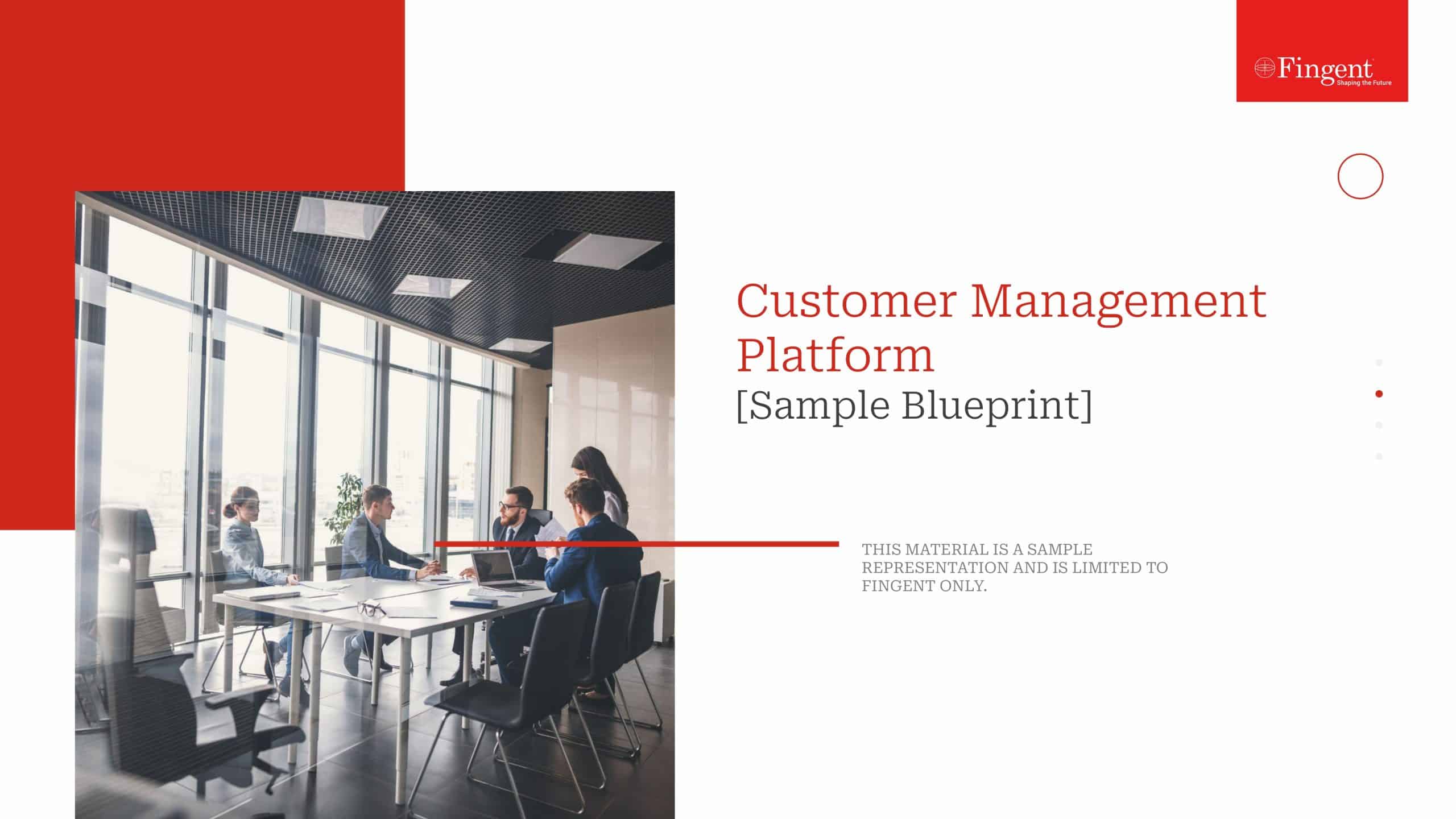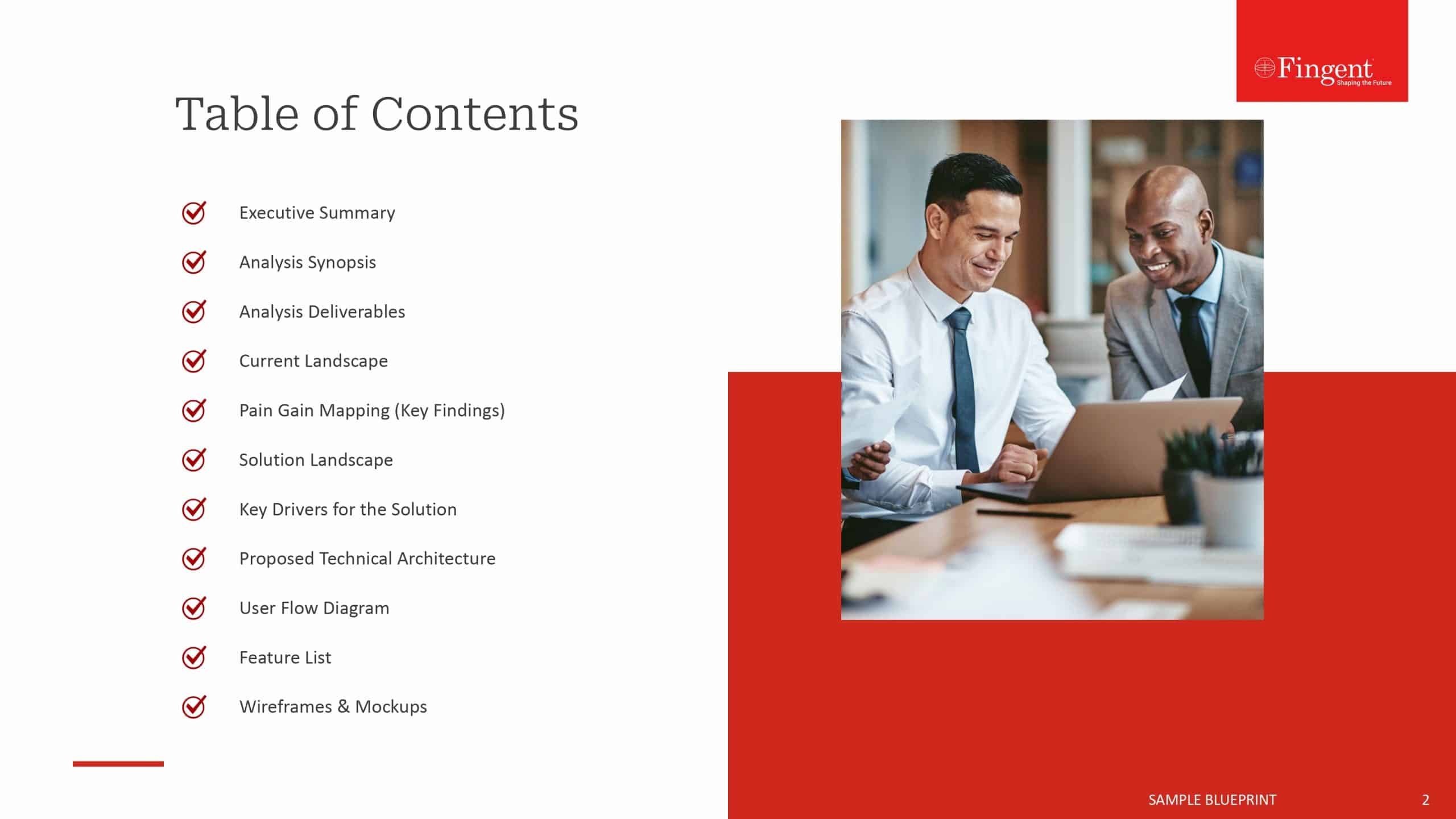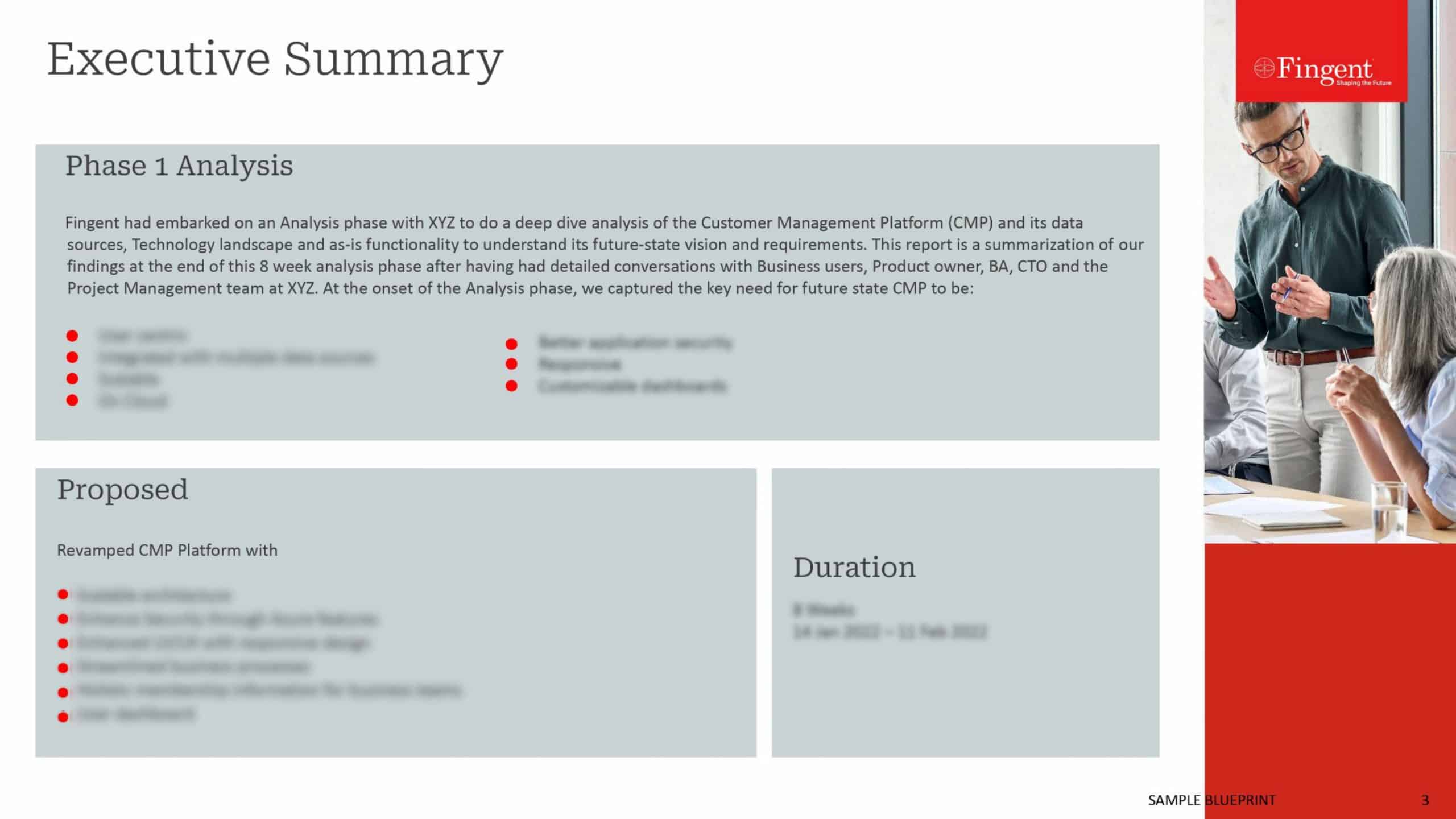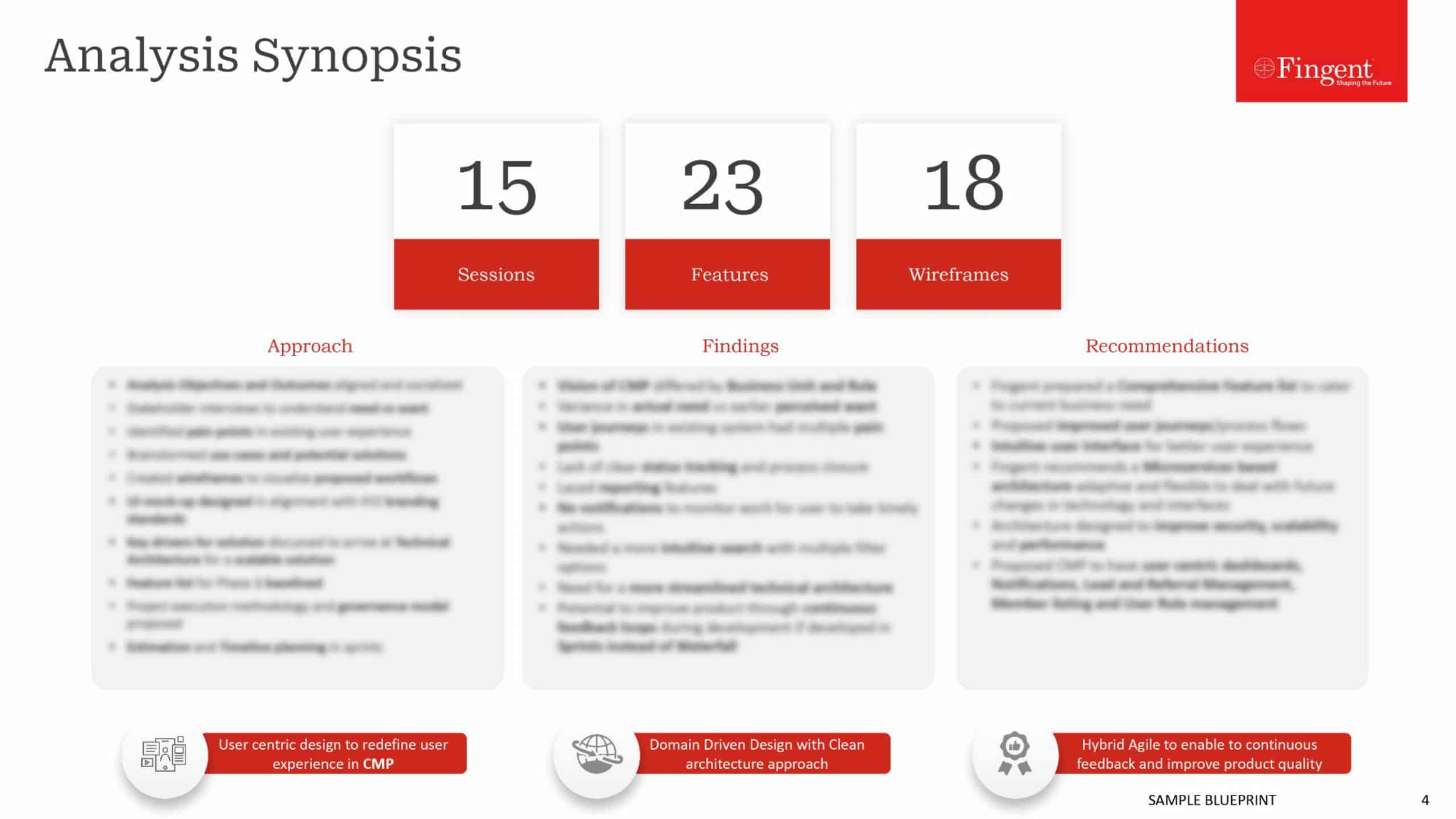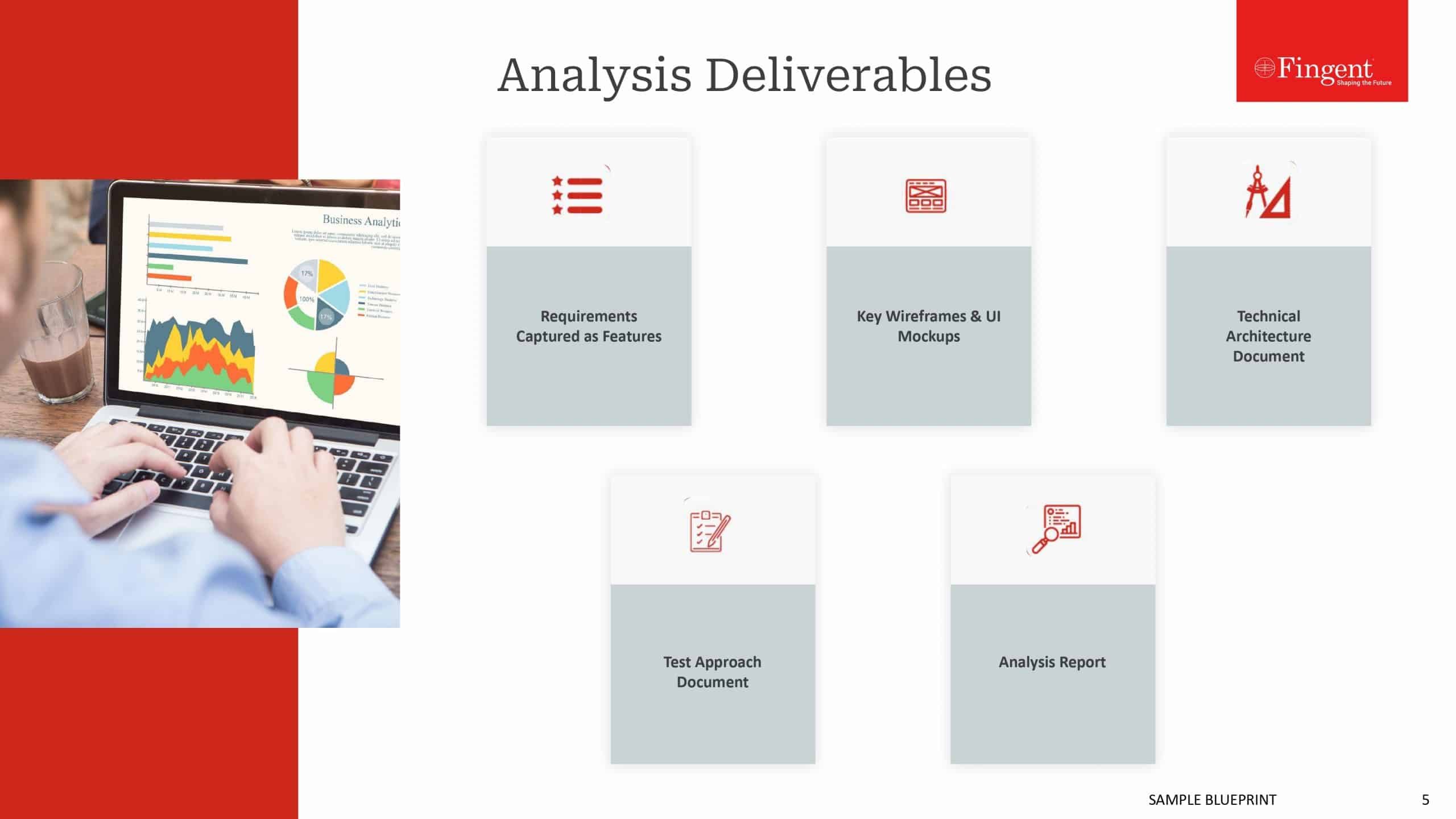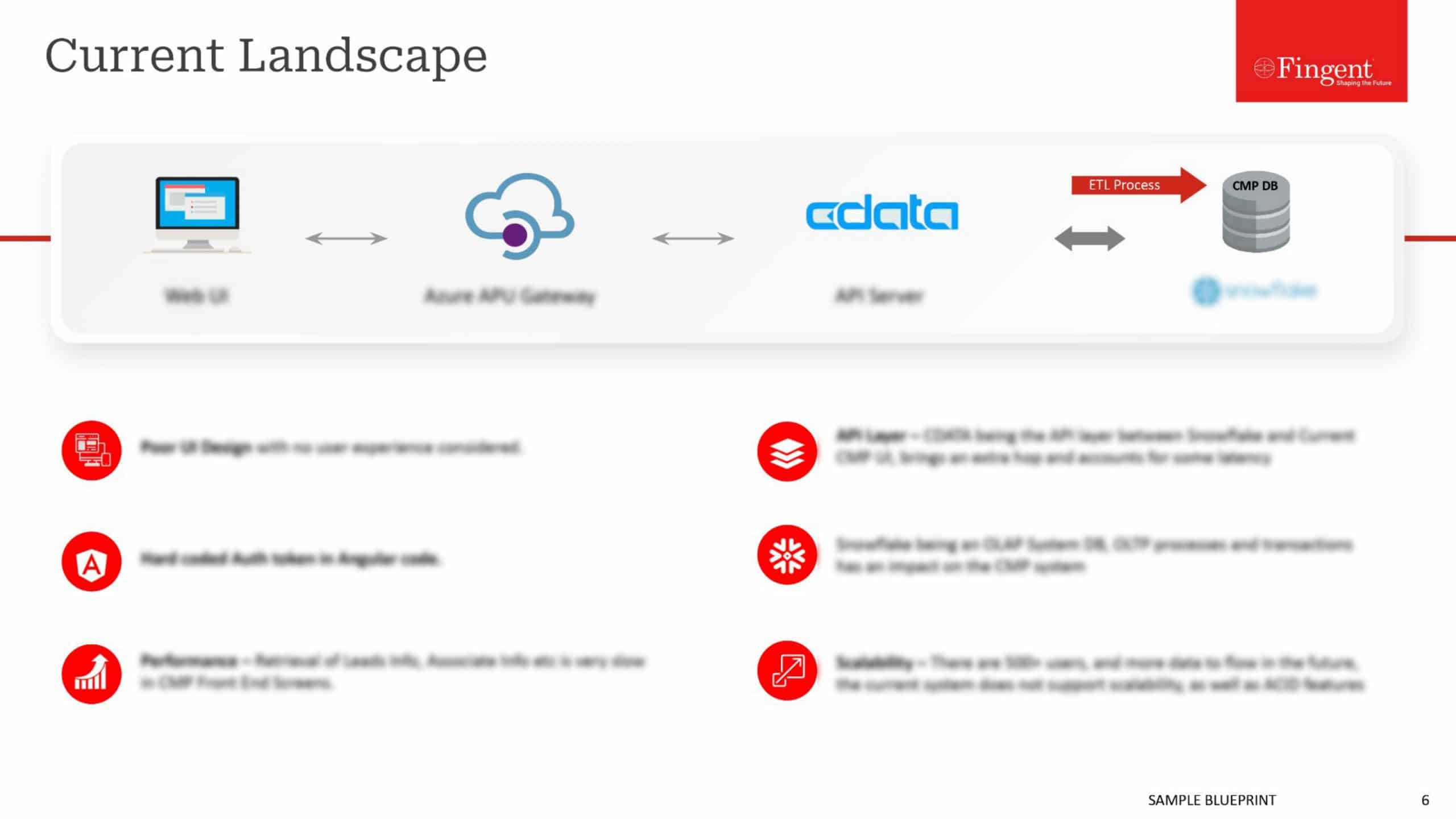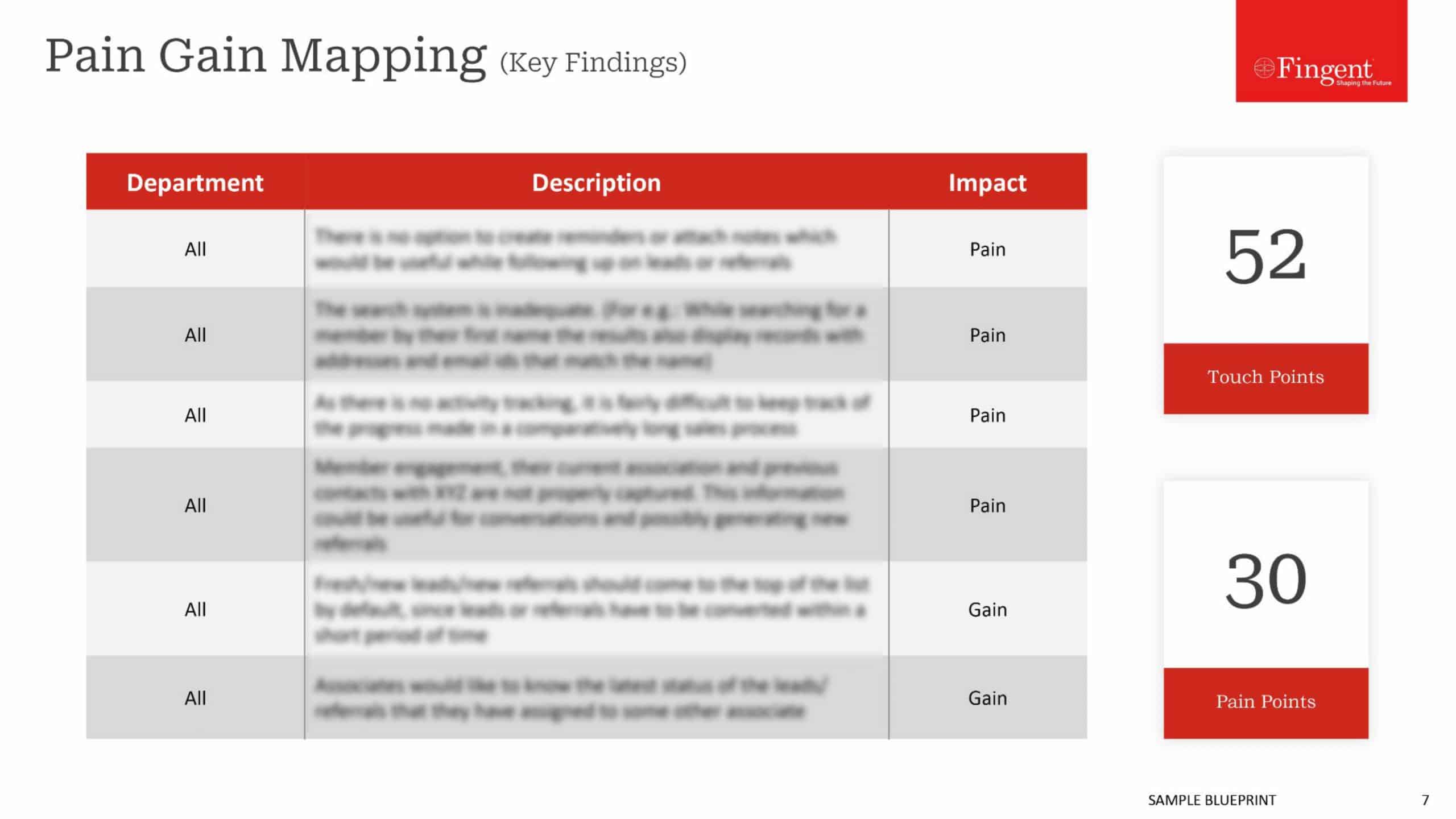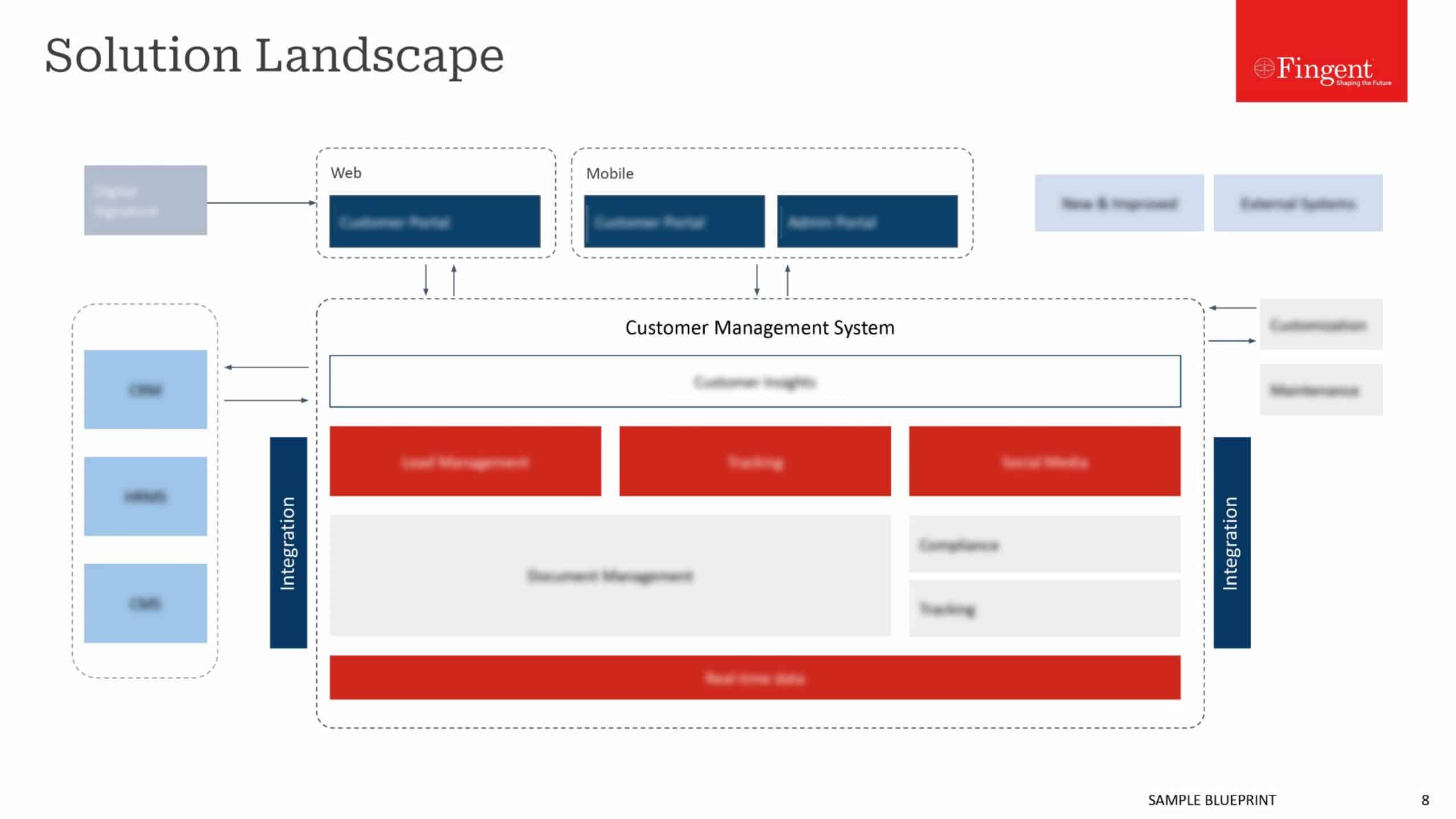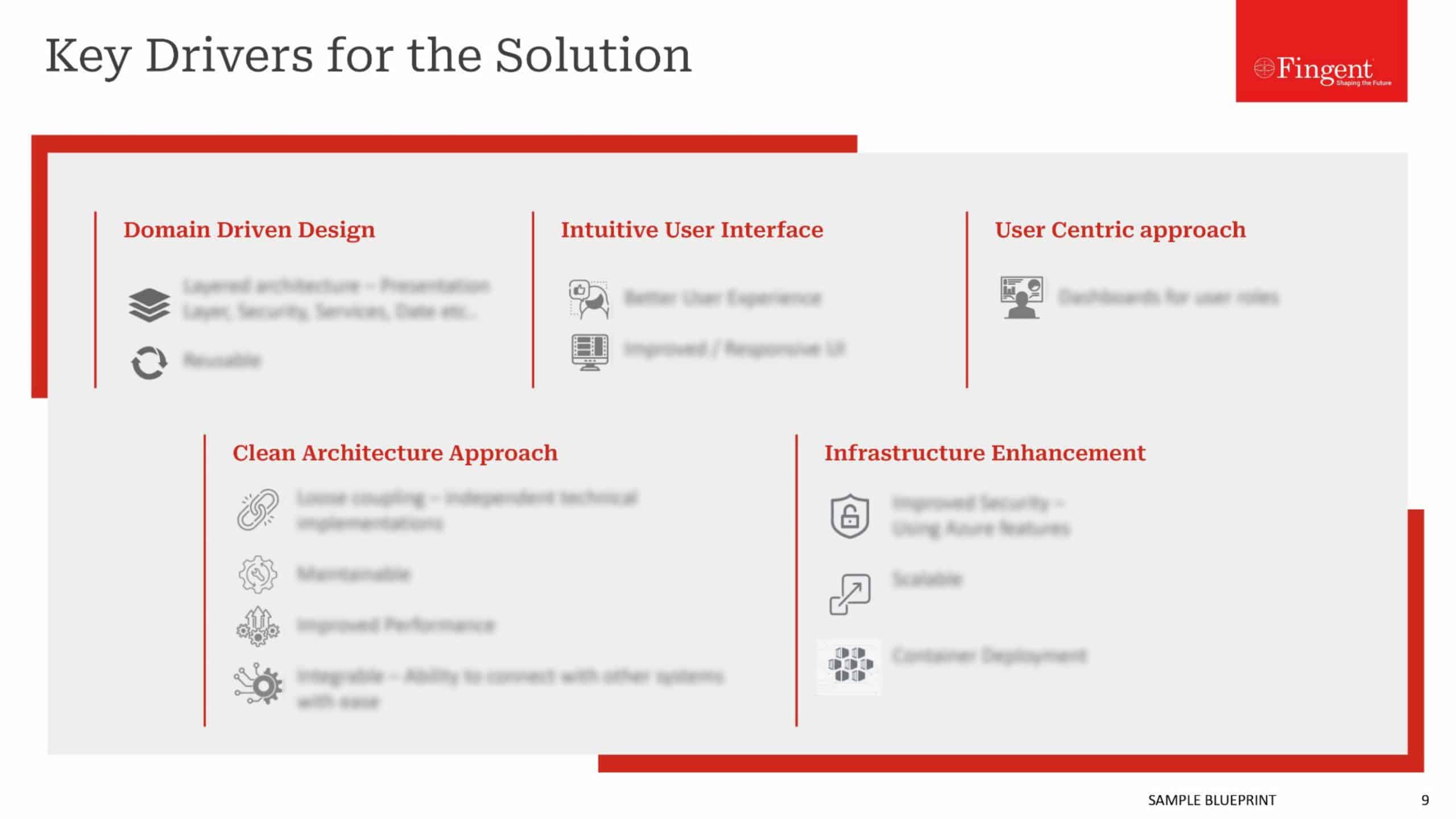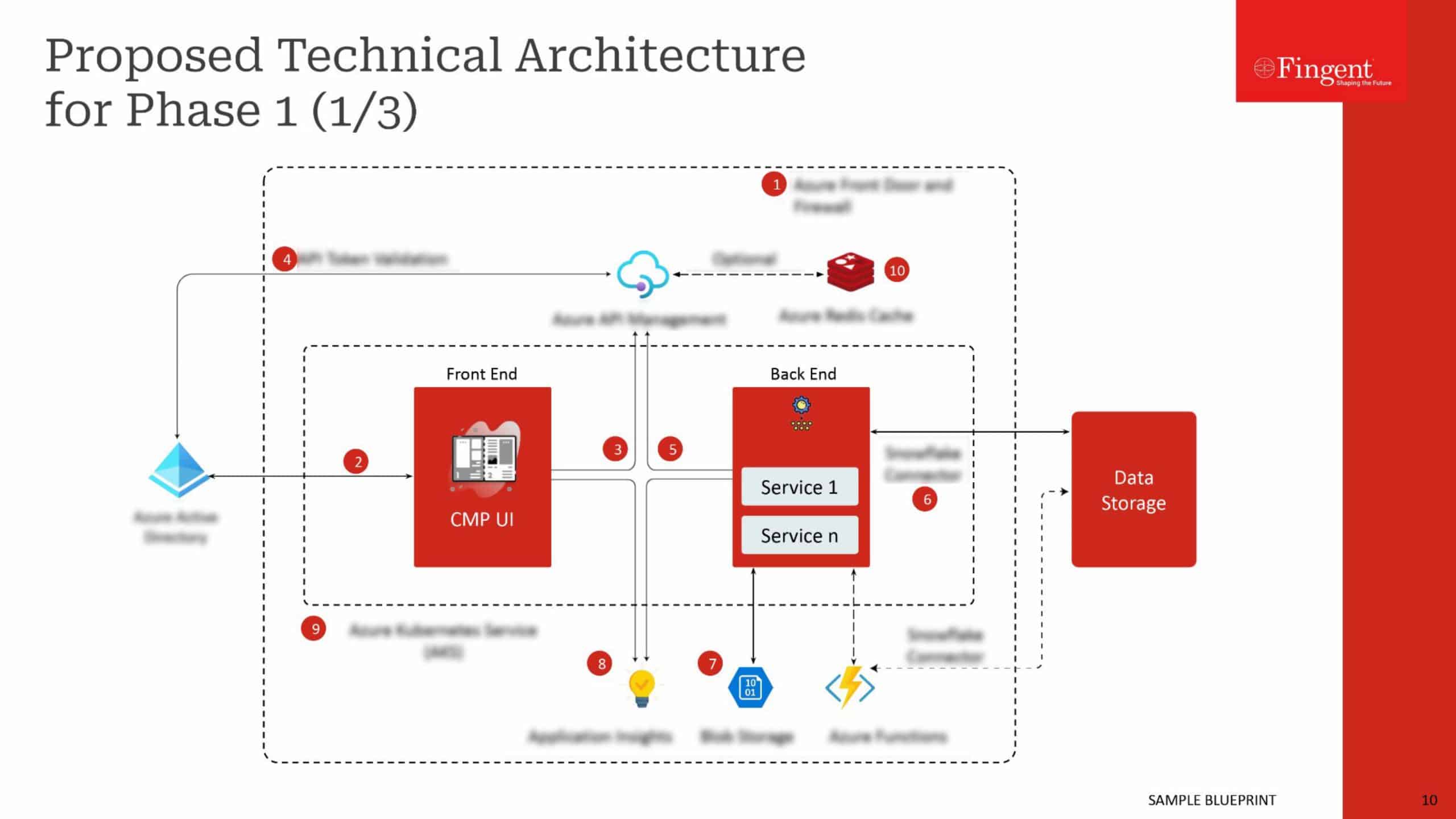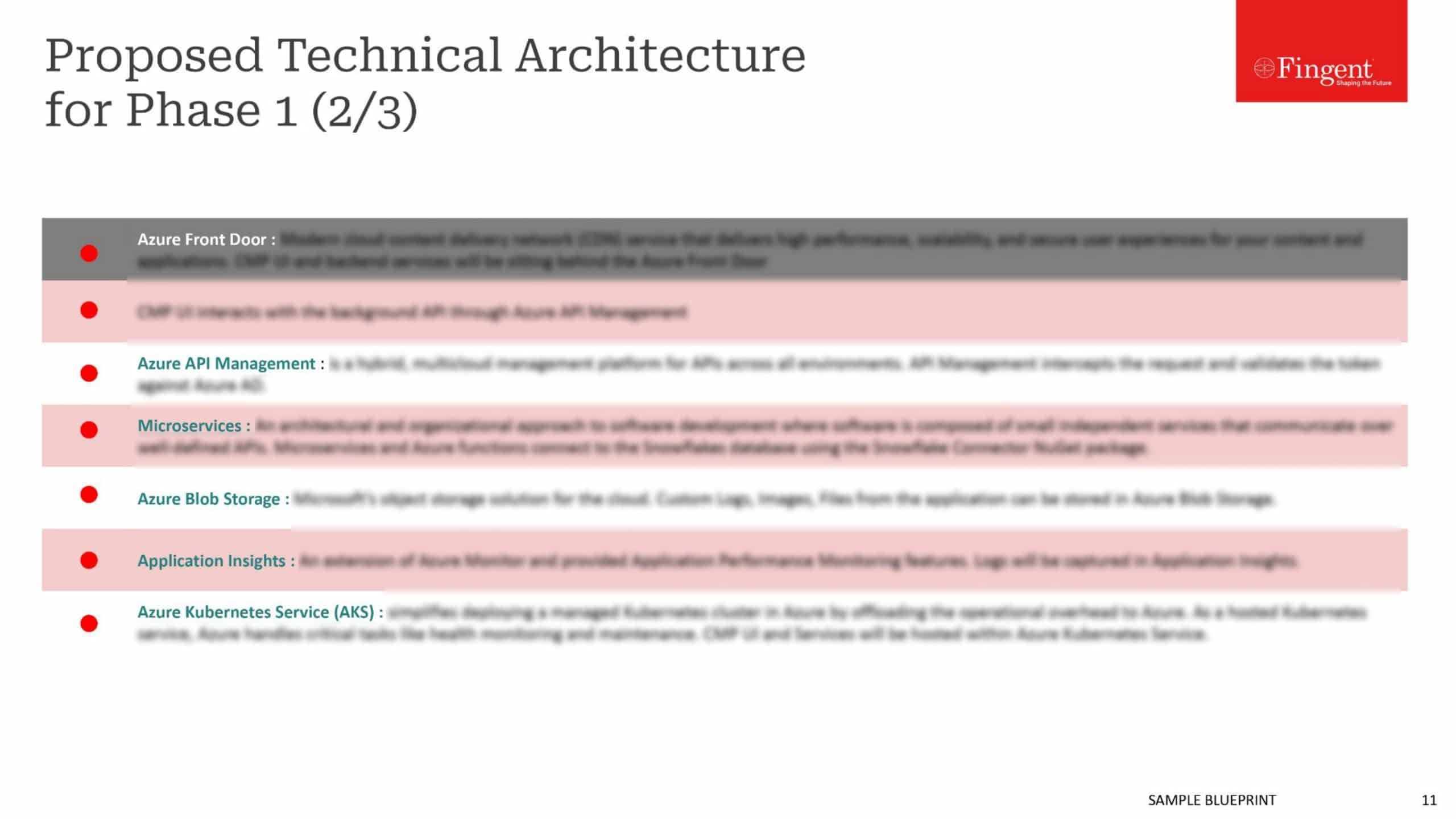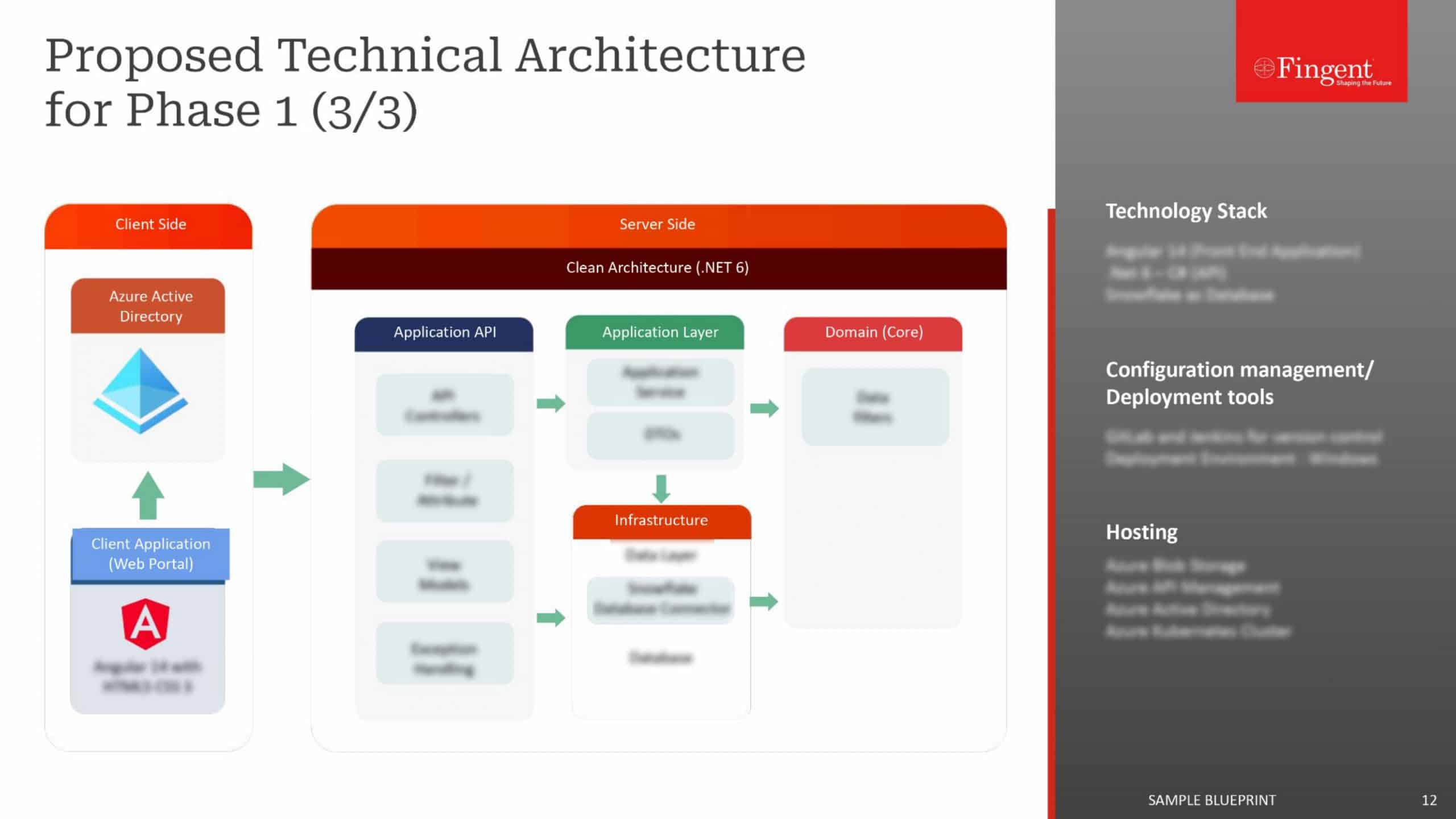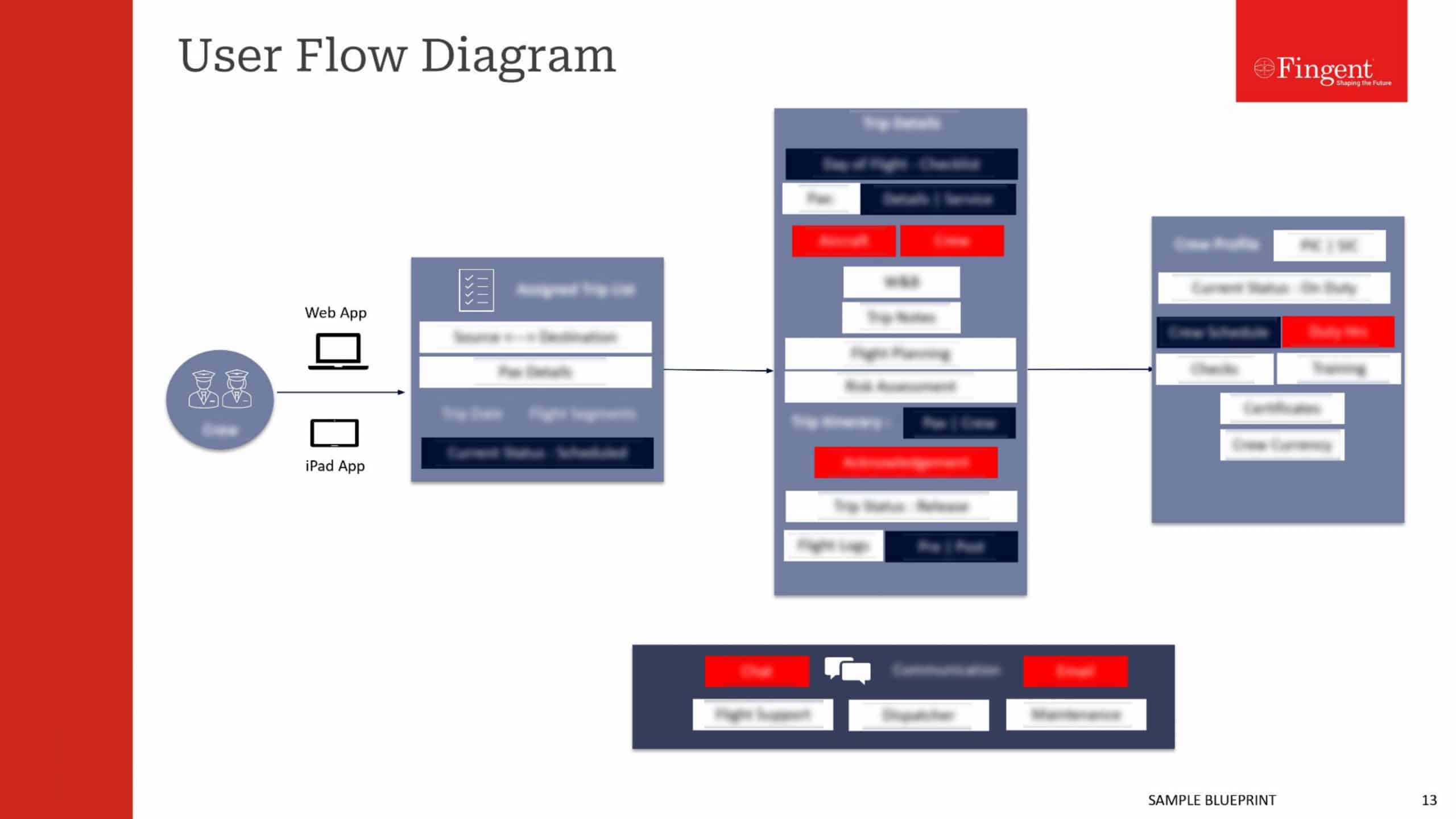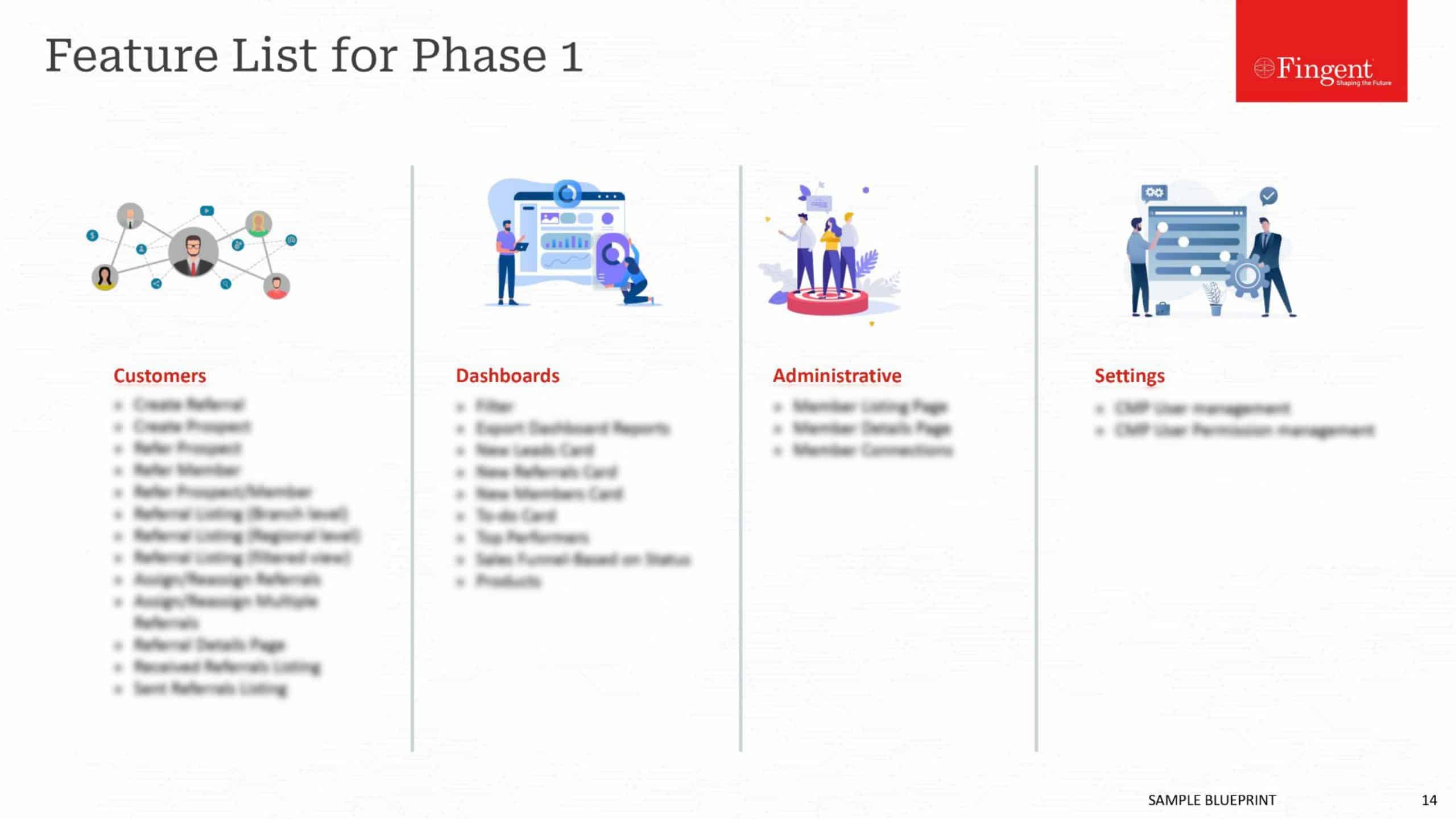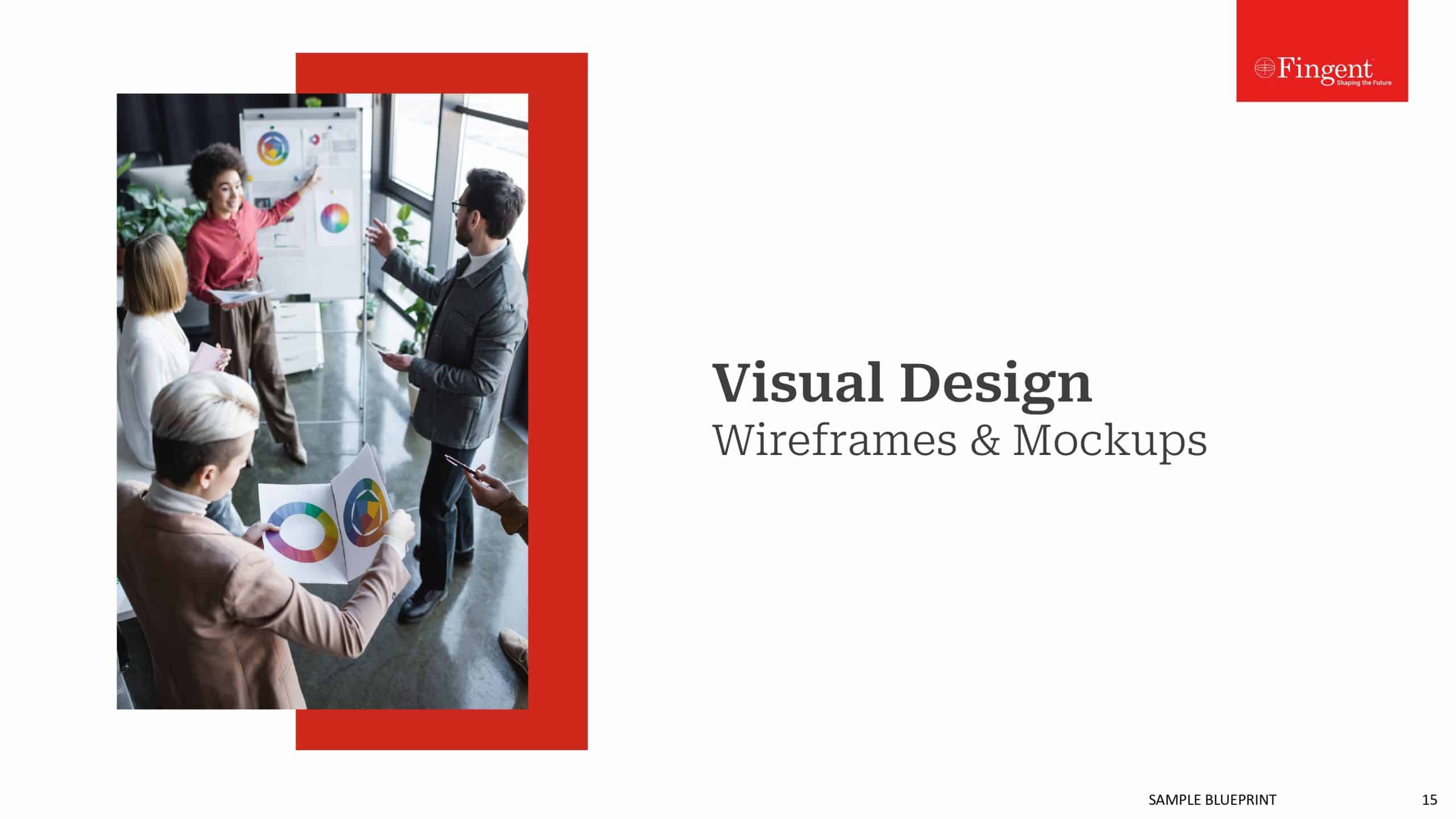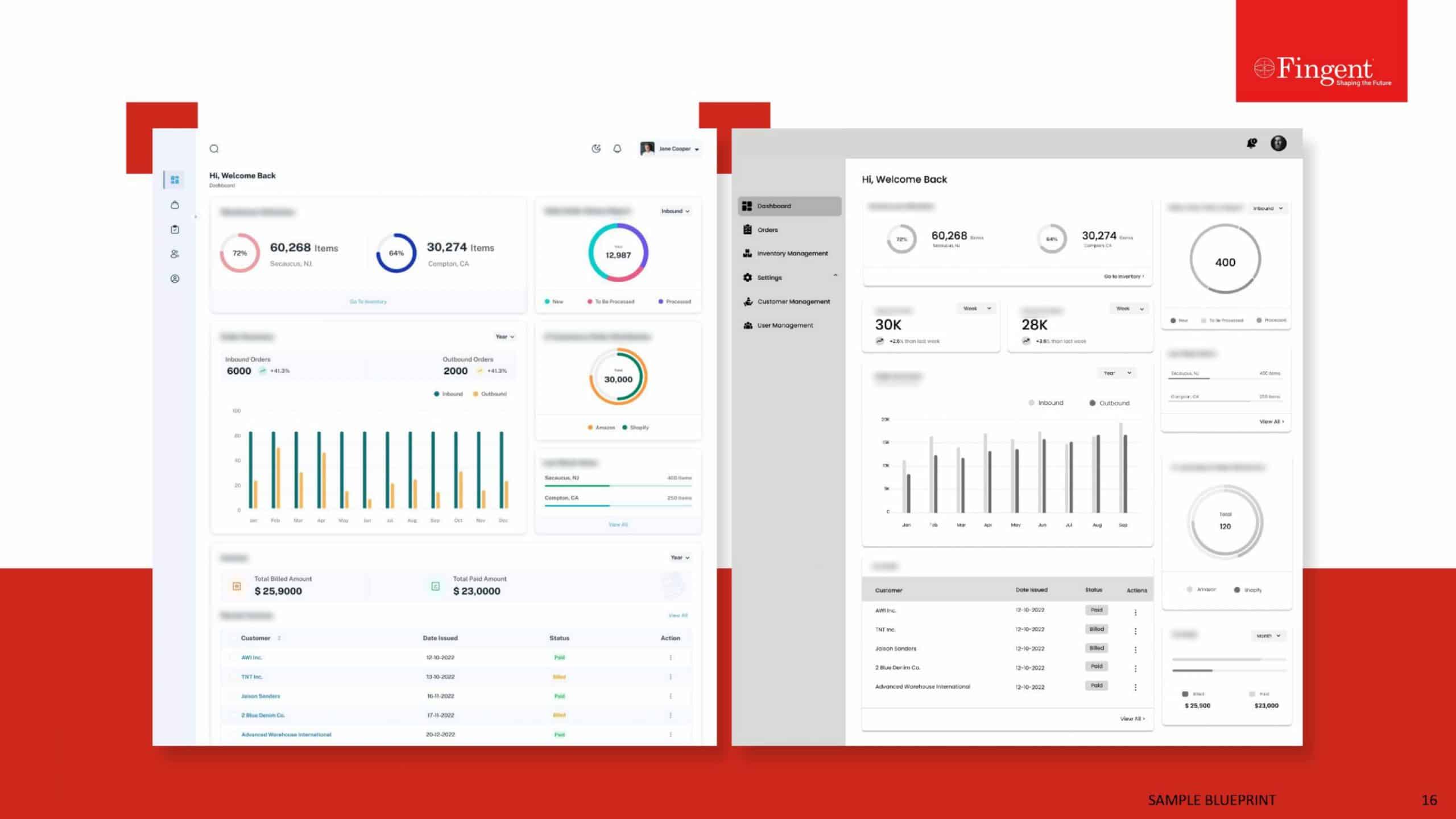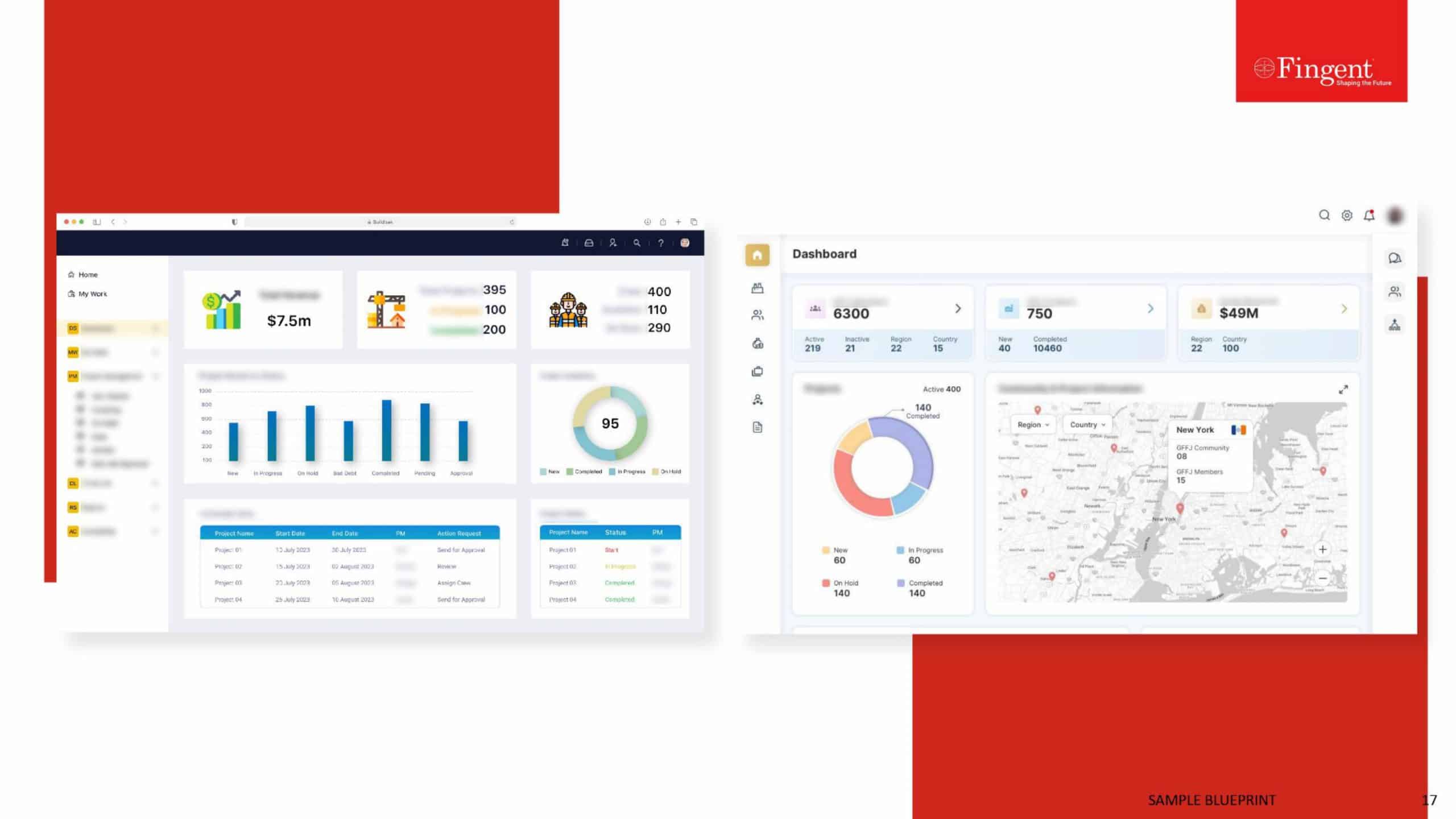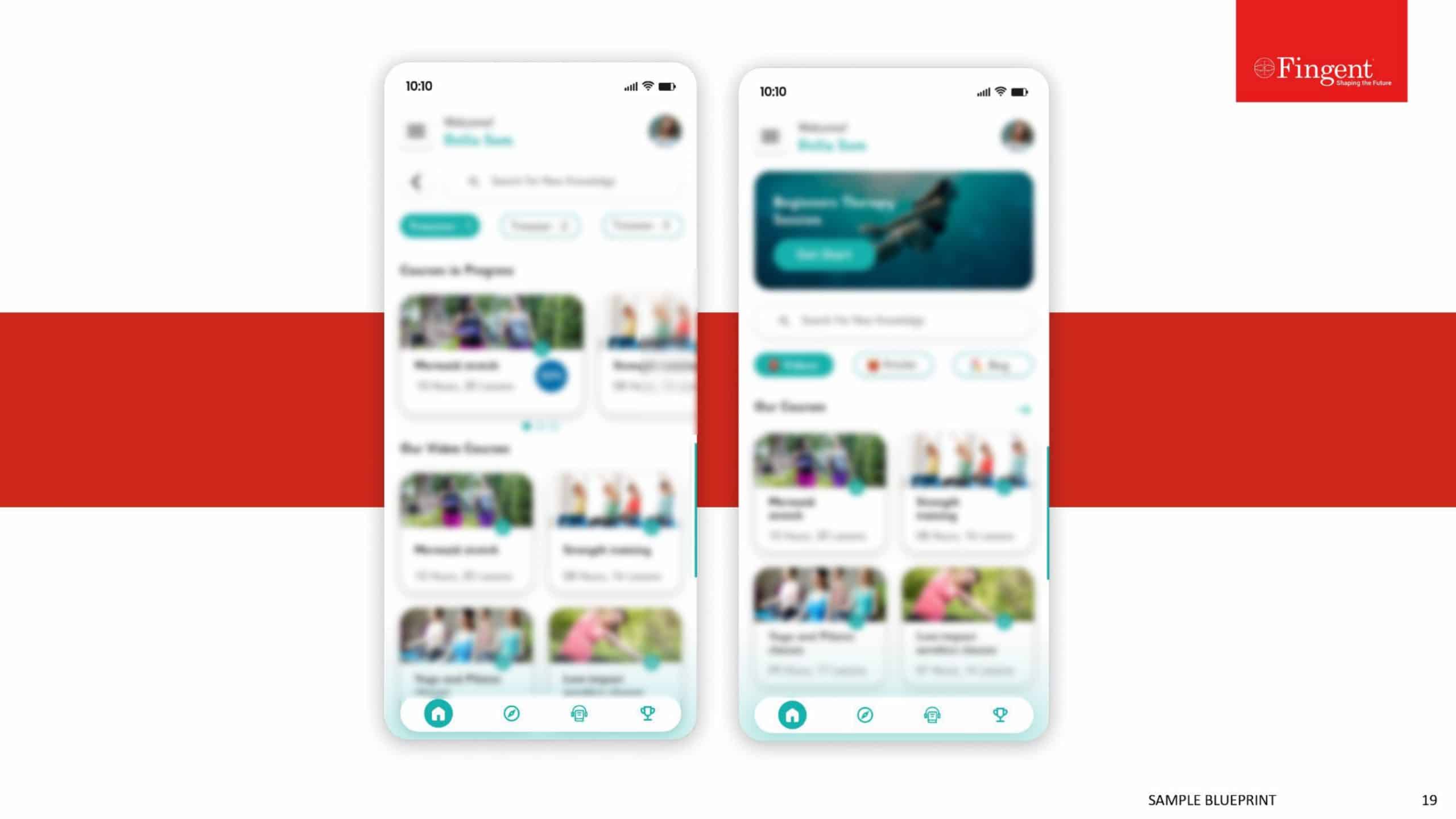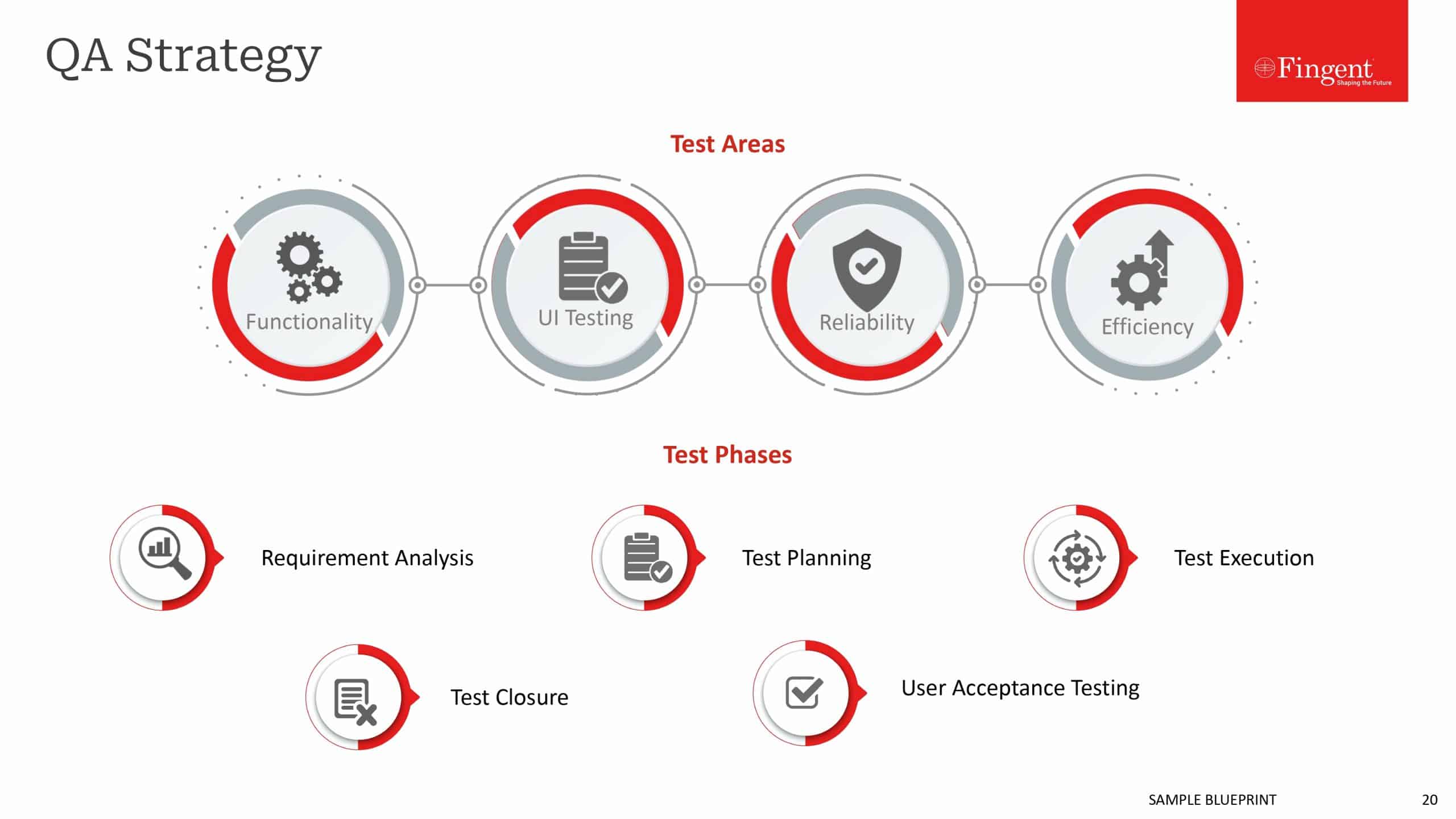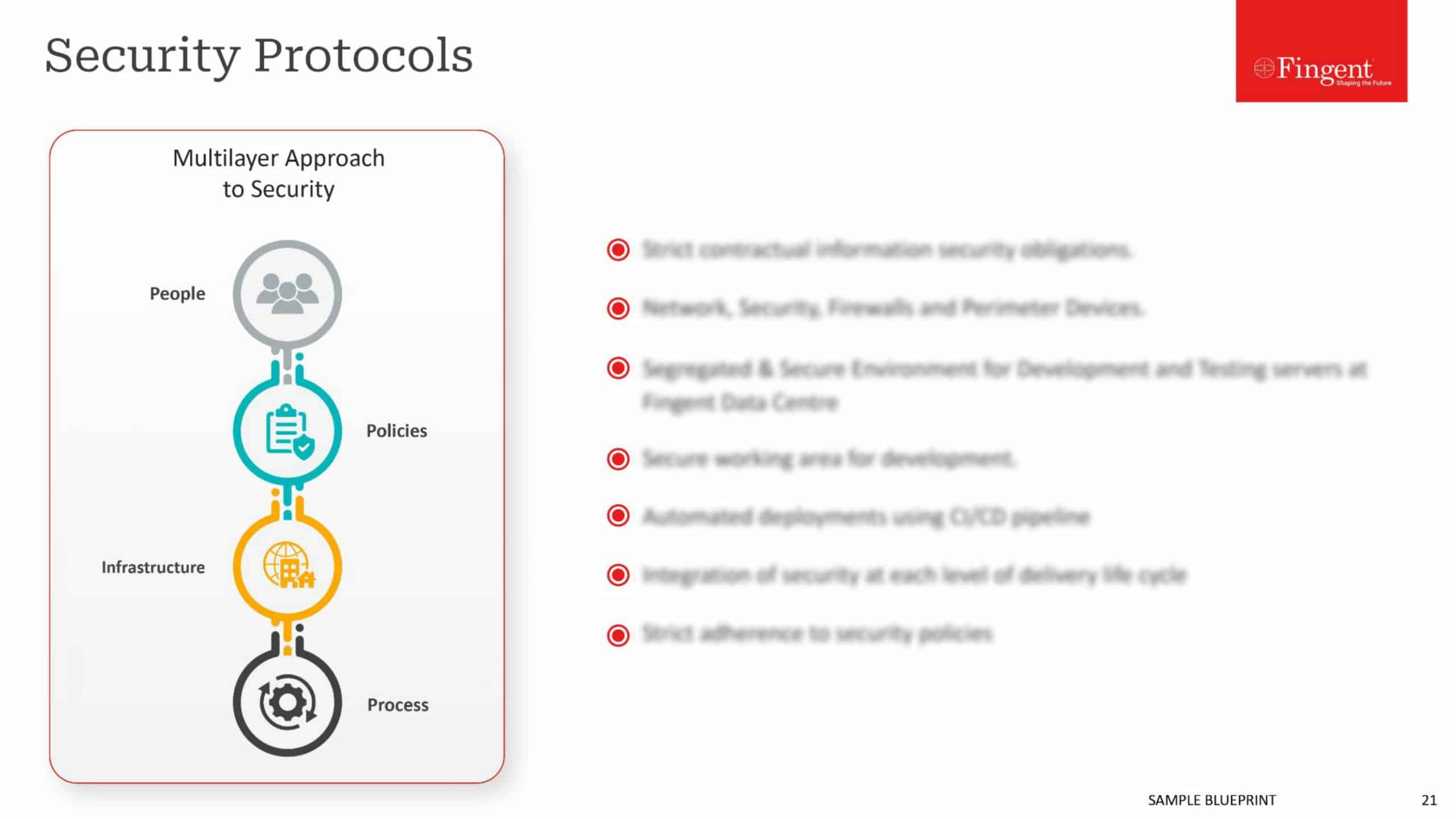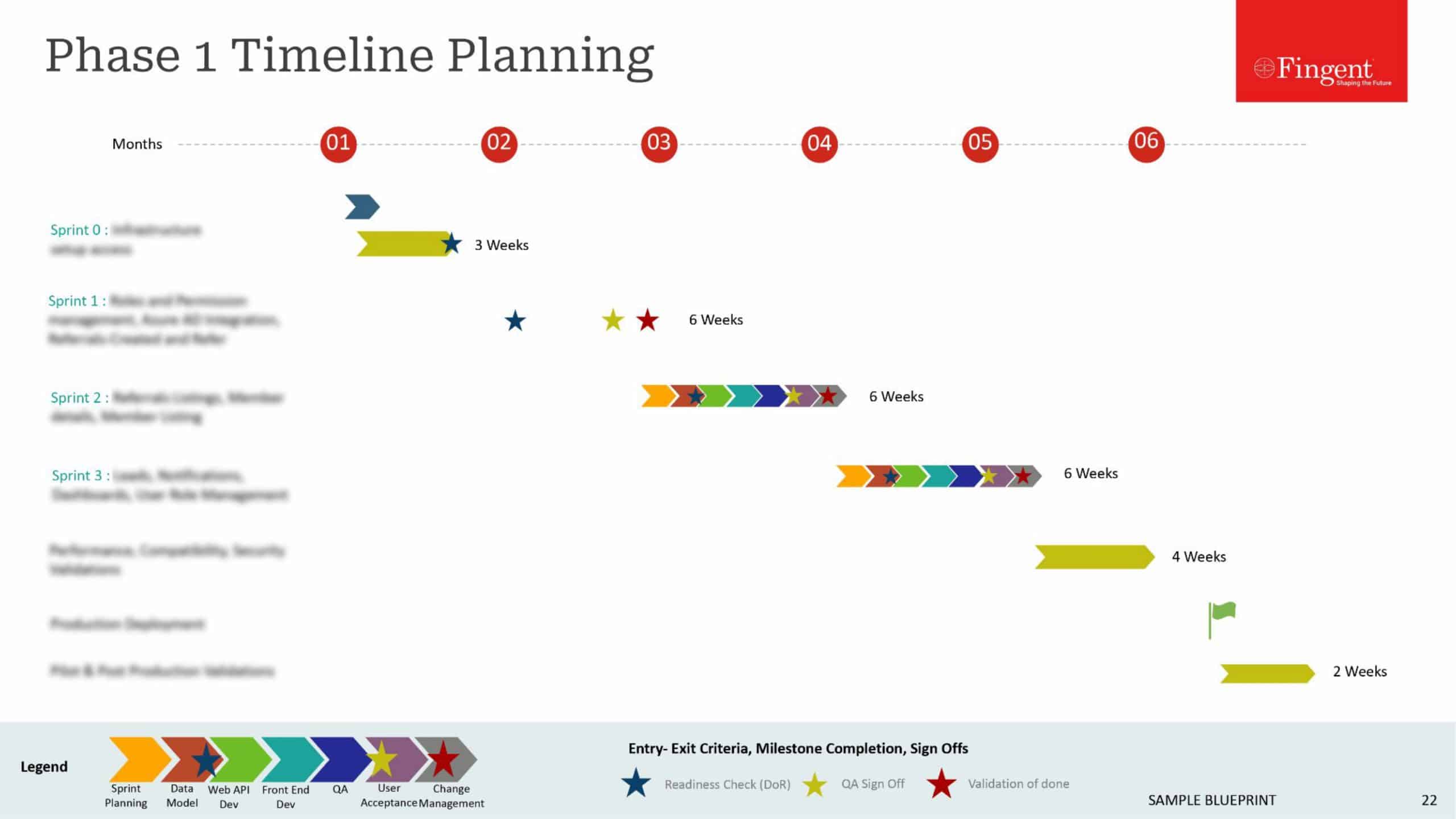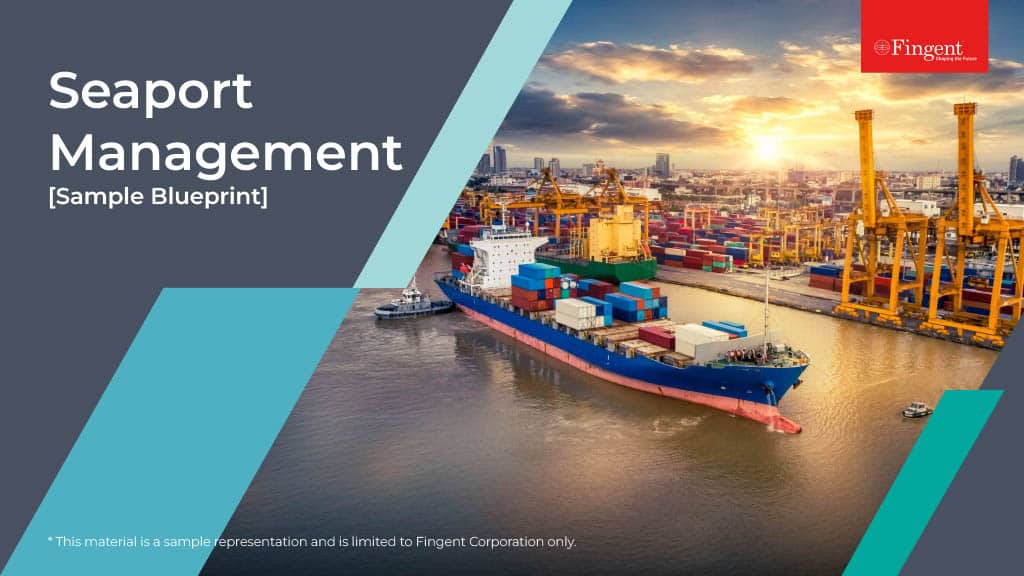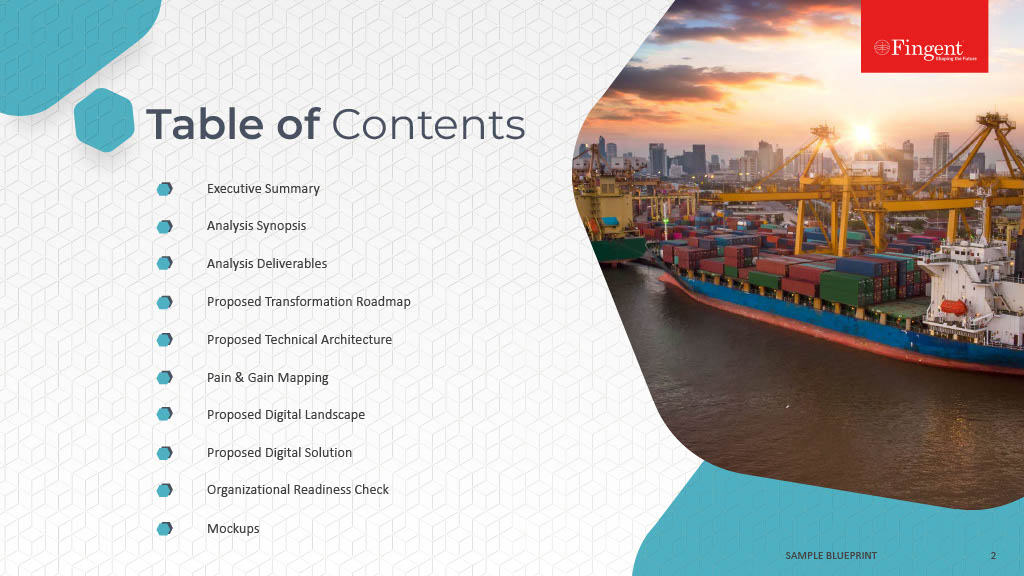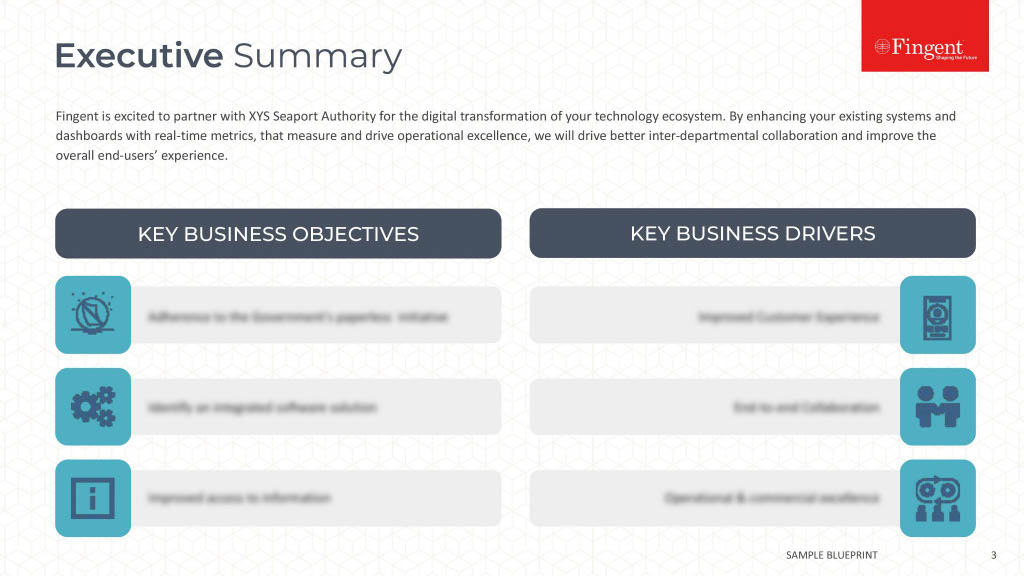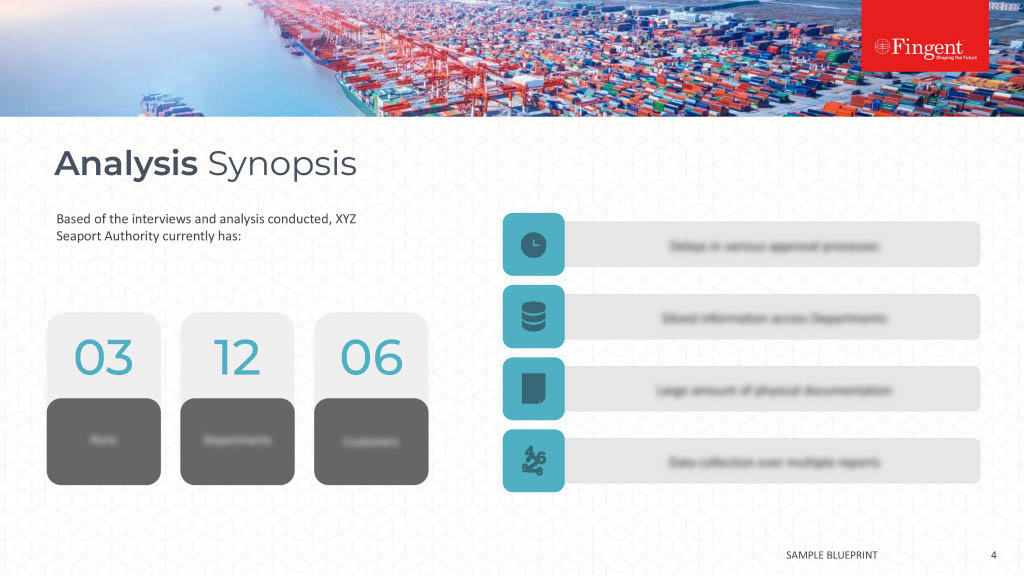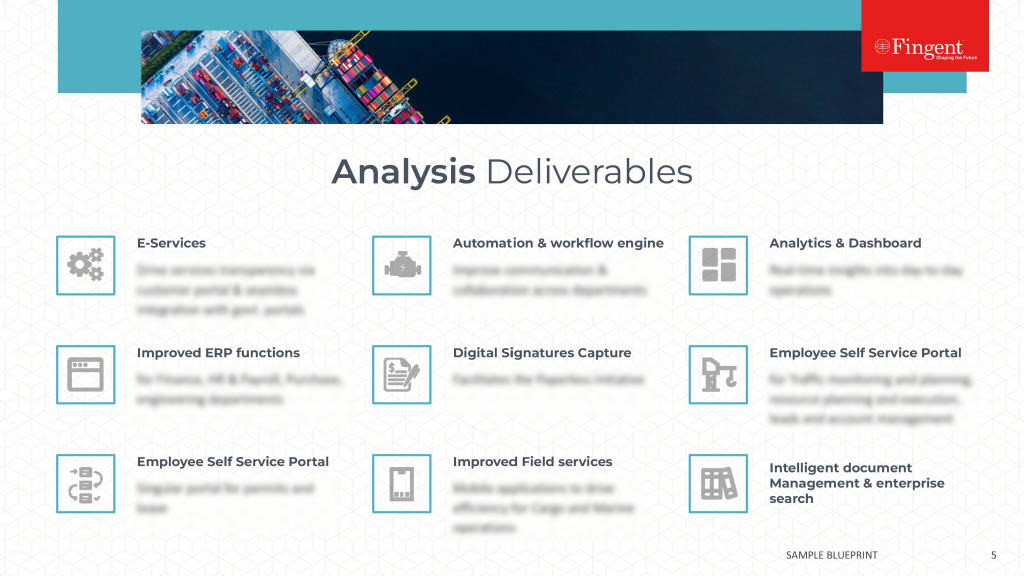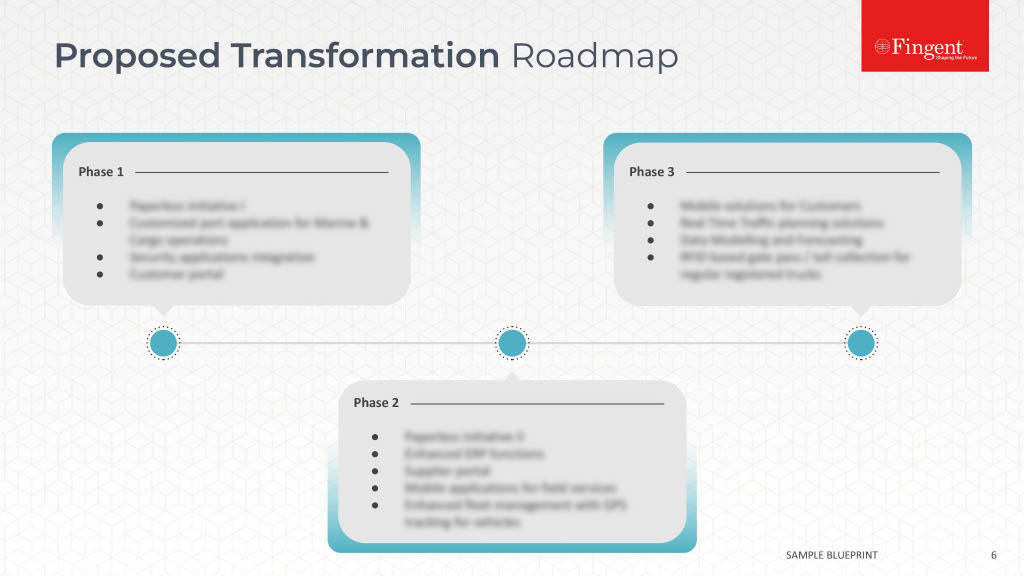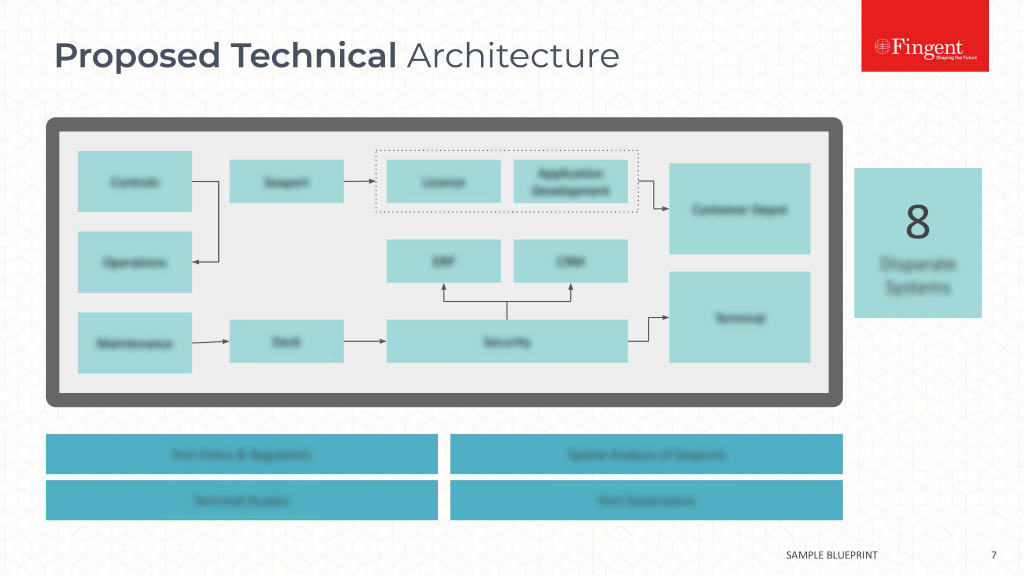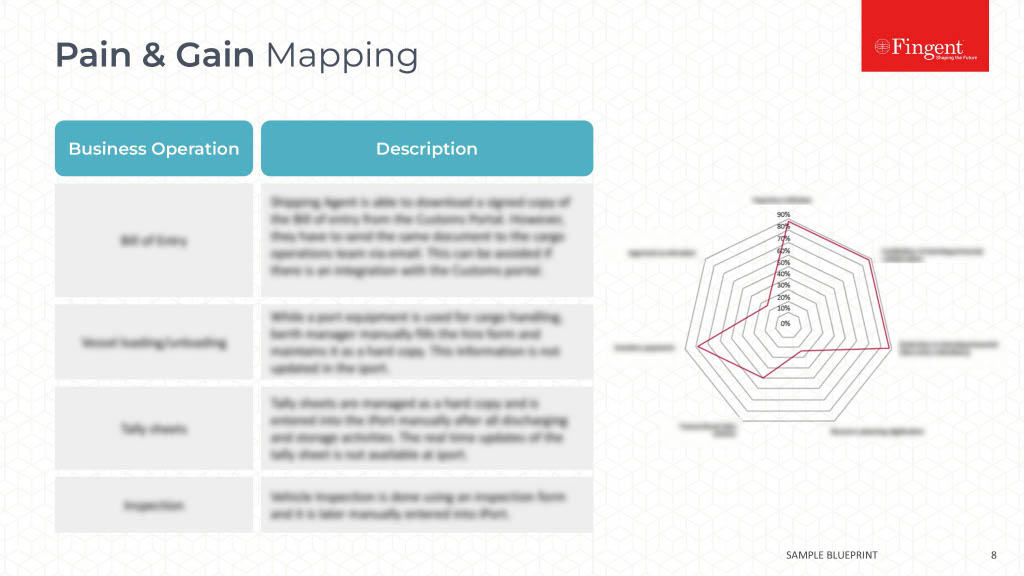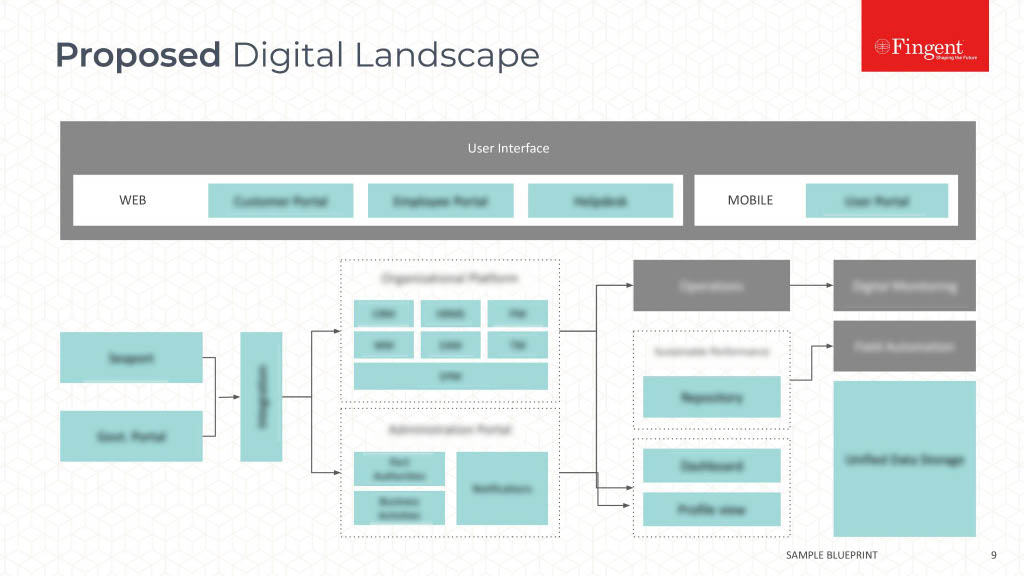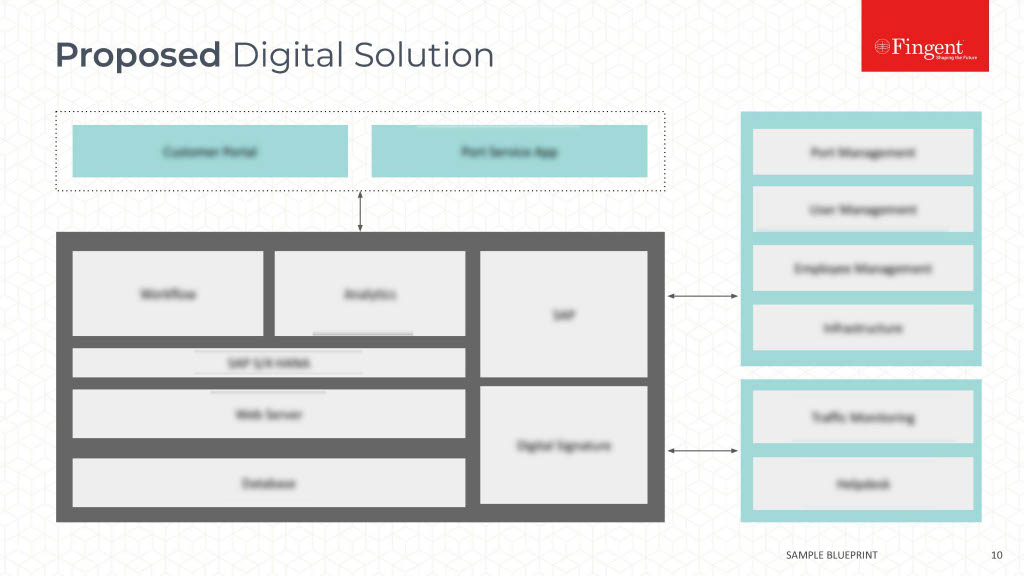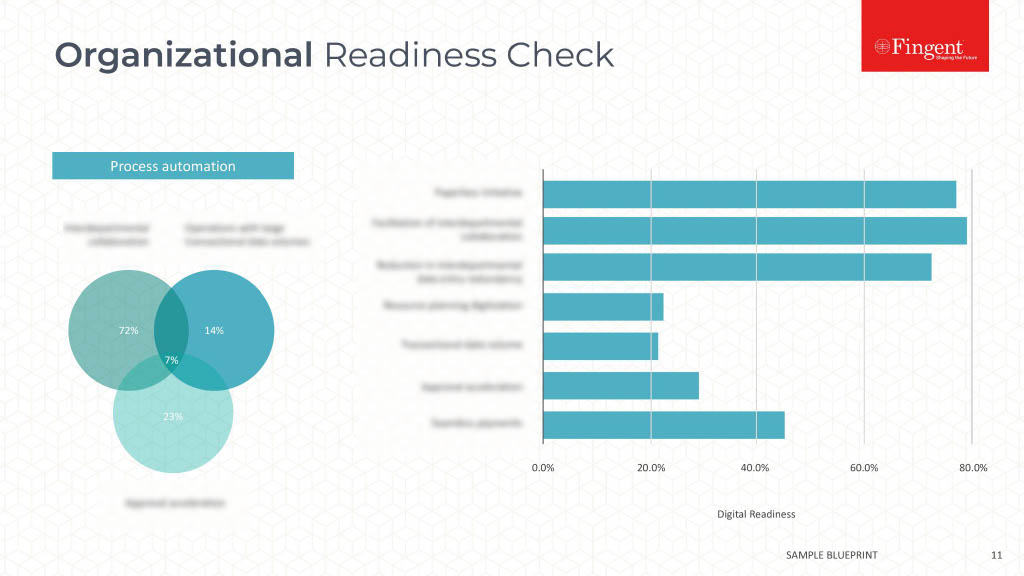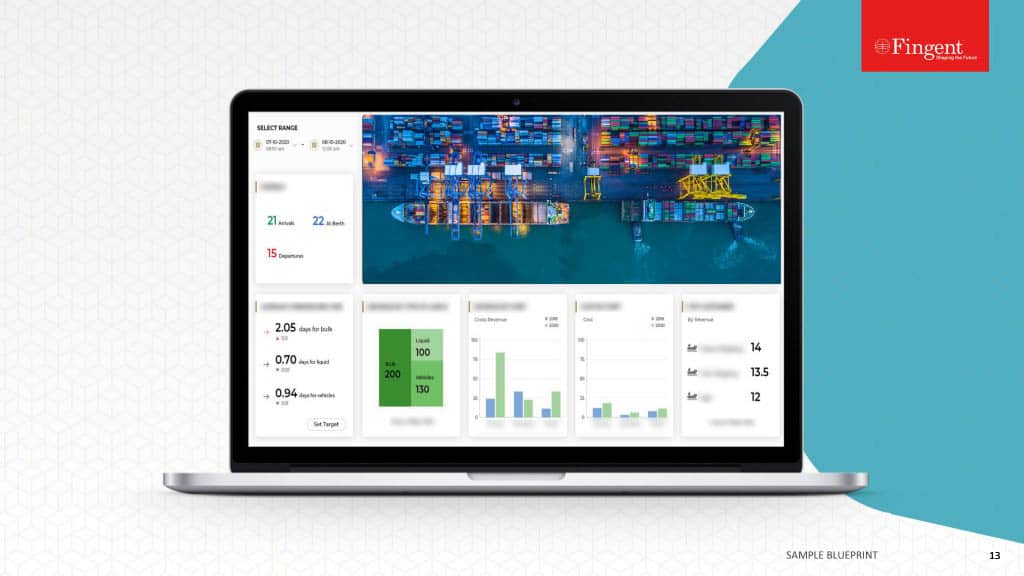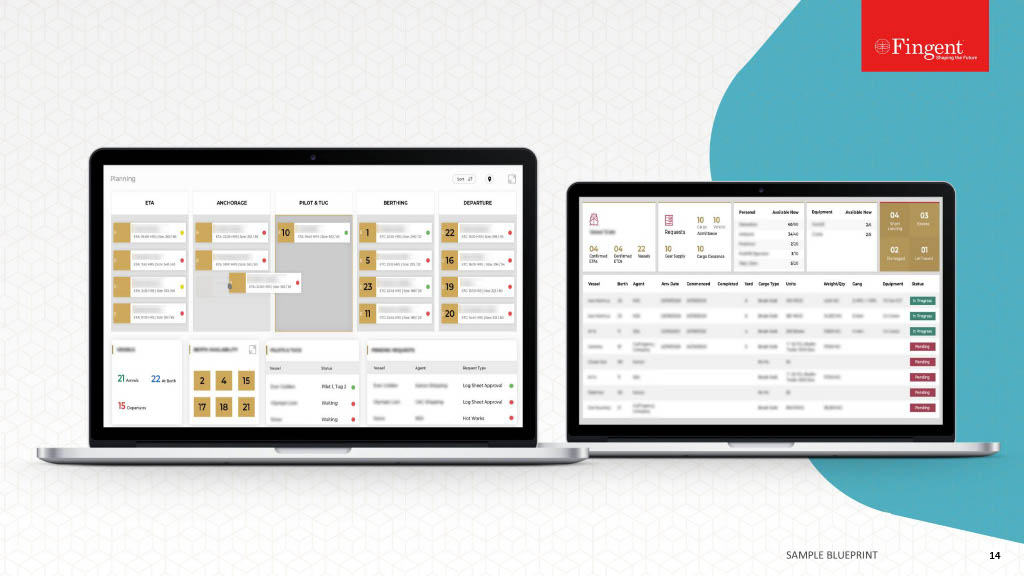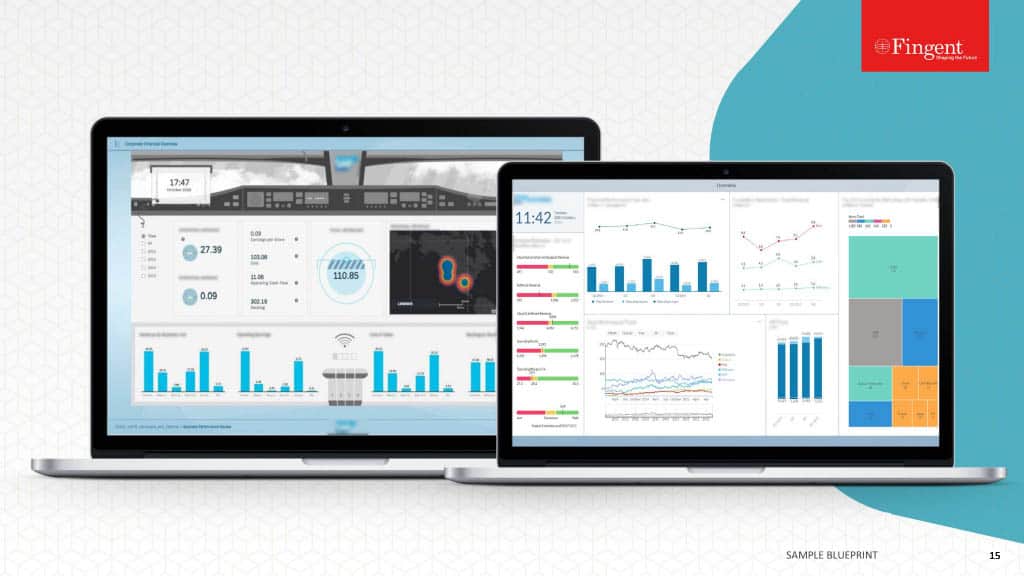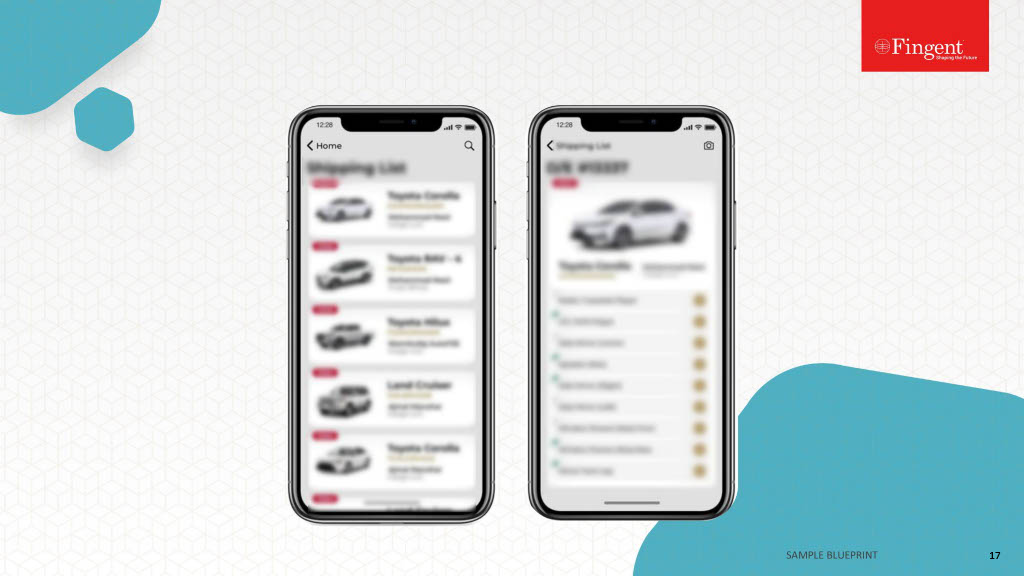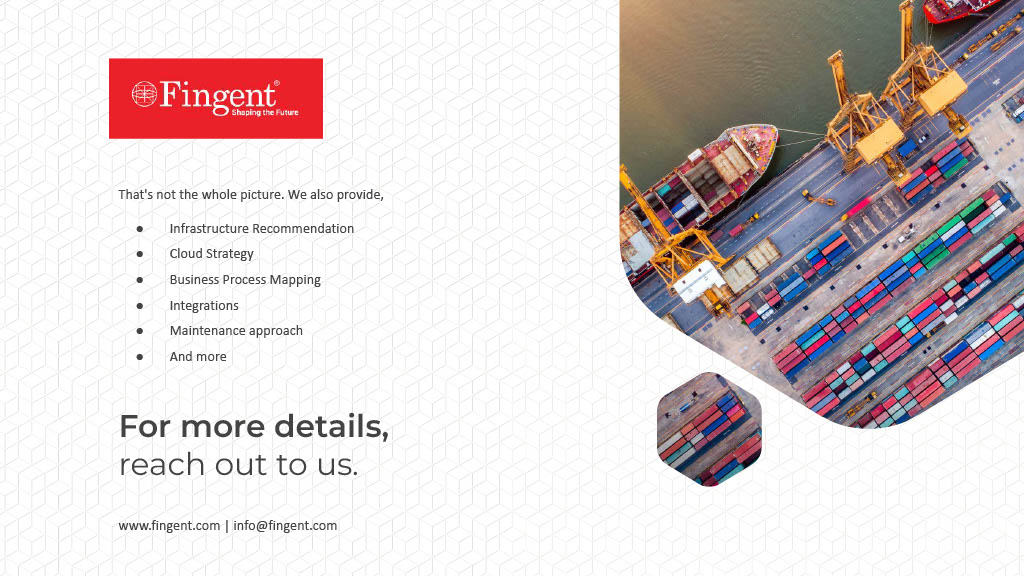Category: Technology
Why Clutch Ranks Fingent As The Top Software Development Company In Australia?
Over the past 16 years, Fingent has partnered with clients across 4 continents and collaborated with start-up, mid-market, and large enterprises to solve business challenges with the latest custom software development practices. Our core values make us highly attentive to society, peers, family & self, and above all, customers. We are grateful that this client focus is recognized in reviews on Clutch and has enabled us to achieve the position of the leading software developer in Australia.
Clutch is a B2B rating and review platform with thousands of company profiles. Clutch carefully analyzes and evaluates industry data, brand reputation, and most importantly, client testimonials to craft authentic descriptions of development companies and their services. When a company is facing a business challenge, Clutch stands as a directory to browse through and find the right solution provider. Clutch connects businesses with leading performers, who receive industry recognition for their excellent services. When it comes to software development, Fingent ranks as the Top Software Developer in Australia. Here’s a peek into Clutch’s leader matrix, where Fingent stands top on the charts of Market Leaders in comparison to the competing companies.
We are extremely thankful to the clients who took the time to share their experiences about Fingent solutions and services on Clutch. Most recently, Sapra & Navarra LLP left us a review on our ongoing development services for their law firm. We were hired by Sapra & Navarra LLP to build a web-based AI machine learning program. Besides receiving 5.0 stars in the Clutch evaluation categories of cost, scheduling, quality, and willingness to refer, Sapra & Navarra LLP appreciated our accessibility and efforts to prioritize being available to answer any questions or concerns. They also applauded our organization, including our robust agendas of maintaining transparency through meetings and conference calls.
Check out a summary of the perfect 5.0 review below!
Once again, we are very grateful to our clients for sharing their positive feedback on Clutch. It inspires us to continue delivering unique, budget-friendly solutions on time.
“We are excited to have been chosen as a top ASP.NET developer and NodeJS developer for 2020 by Clutch.”
– Stephen Cummings, Senior Vice President – Business Development, Fingent
If you’re looking for a technology partner who can build a web or mobile app, deploy RPA or AI technology, or provide software consulting, please get in touch! We’d love to discuss your latest project.
Stay up to date on what's new

Featured Blogs
Stay up to date on
what's new



Talk To Our Experts
How AI is bringing change to the software testing practice
Artificial Intelligence is penetrating into multiple functions performed by the software industry. In software testing, the technology holds the potential to be a game-changer. Imagine the capability of your software to test and diagnose itself and make self-corrections! This will lead to huge savings on your resources. With this in mind, let’s try and understand exactly how AI will impact the traditional way of software testing.
Before we proceed, let’s get one thing clear – Do we really need AI in software testing?
Do We Really Need AI in Software Testing?
Software testing came into existence as a result of the evolution of development methodologies. It fed the need for robust, error-free software products. Testing was a laborious task for sure. However, automating software testing required traceability and versioning, both of which were critical and needed careful consideration. Something was needed to resolve this.
As businesses move towards digital transformation and the software market continues to grow, businesses expect a real-time risk assessment across all stages of the software delivery cycle. AI in software testing is the right response to these challenges. AI can develop error-free applications while enabling greater automation in software testing. This helps meet the expanded, critical demands for testing. It improves the quality of engineering and reduces testing time allowing the tester to focus on more important things. The verdict is clear then – We Really Need AI for Software Testing!
Five Impressive Ways AI Impacts Software Testing
1. Improves object application categorization
AI is widely used in object application categorization. When tools and testers are created, unique pre-train controls can be created. Once the hierarchy of the controls is categorized, testers can create a technical map to obtain labels for the different controls.
In the near future, AI will become capable of observing users perform exploratory testing on the testing site. And once user behavior is assessed, it can assign, monitor, and categorize the risk preference.
2. Automation of test case writing
Gone are the days of web crawlers. As automation is picking momentum, AI tools have become capable of learning business usage scenarios of test applications.
Related Reading: Unconventional Ways Artificial Intelligence Drives Business Value
They can automatically collect insightful data such as HTML pages, screenshots and page loading time and eventually train ML models for expected patterns of the app. And as soon as they are executed, any variations are marked as potential issues. This makes it easier for the tester to find and validate differences and fix issues.
3. Enhanced accuracy
To date, source analysis requires human resources to accomplish the task. Unfortunately, because of the enormity of the data, even the best experts could overlook, or miss out on observing certain critical defects. Human error and the tendency to lose focus further impairs the experts involved in software testing. It can be disastrous if bugs caused by these errors are caught by consumers before project stakeholders. Product positioning and brand reputation can be jeopardized.
Thankfully, AI can teach systems to learn source analysis and, in the future, apply this acquired knowledge. This ensures that testers have greatly enhanced accuracy. It eliminates the probability of human error and also shortens the time to run a test and increases the possibility of finding defects or bugs.
4. Automation without the user interface
AI-based techniques can be applied for non-functional tests such as performance, security and unit integration. It can also be applied on various application logs which assists in developing auto-scaling capabilities such as bug prediction.
AI algorithms can enhance UI testing, predict the next test, determine the outcomes for subjective and complex tests and much more. In other words, AI could increase the overall test coverage while it increases the depth and scope of the test itself.
5. Reduces cost and decreases time to market
The need for manually repeating a test is time-consuming and extremely expensive. But with AI, such tests can be automated to repeat several times over. Each time the software test is repeated automatically, the source code gets modified to correct any bugs. This eliminates the additional cost of repeating the test and increases the speed of the test from days to hours, which in turn saves more money.
Related Reading: Quality Assurance in Software Testing – Past, Present & Future
Allow AI to Revolutionize your Business
AI has proven to have a significant impact on software testing with its benefits ranging from optimization to extraordinary savings. It enables testers to move beyond the traditional route and dive toward precision-based testing processes. This can prove invaluable to your business. To find out how you can make this happen for your business, contact us.
Stay up to date on what's new

Featured Blogs
Stay up to date on
what's new



Talk To Our Experts
How to prepare for IoT in 2025?
In coming years the Internet of Things (IoT) is here to stay. We’re at the cusp of a new era wherein intelligent digital connectivity is a part of our day-to-day lives. Gartner predicts that there will be 25 billion connected devices by 2021. Thus, IoT has made its presence felt across various industries.
Upcoming IoT trends that can shape the business landscape
1. Industrial IoT and Digital Twin technology:
IoT has made manufacturing smart, efficient and less risky. Using digital twin technology, organizations can access the context, structure, and behavior of an asset. Thus, you have the information regarding the past and present state of an asset with an ability to look into the future. Organizations are therefore receiving warning alerts and predictions faster than ever before. Investing in a digital twin can be a part of your IIoT strategy so that after implementing sensors into your machines, you can document their operations and fine-tune them.
2. Computing would be balanced between the cloud and the edge:
While those new to IoT consider cloud as inevitable, high data transmission costs for remote business environments have moved computing to the edge. In many industrial sectors, shifting some analytics intelligence to the edge may prove cost-effective. With edge devices becoming more affordable and centralized infrastructure becoming more stressed, there would be a balance between cloud and edge.
3. Sustainability will become important:
Sustainability efforts have become a key business priority across the globe. The World Economic Forum reports that IoT projects can help to accomplish the UN’s 2030 Agenda for sustainable development. IoT can have a large impact on global sustainability as it connects people and things. IoT can be used to reduce e-waste, promote agricultural sustainability, save energy, protect species, reduce emissions and so on.
How to gear up for the IoT boom in 2024?
While IoT promises attractive growth potential, many companies lack the technical capabilities and know-how to make their IoT projects work. A recent survey found that almost 75% of IoT projects end up as failures. Following are some of the ways in which you can prepare for the IoT surge:
Related Reading: IoT Implementation: Common Mistakes And Strategies To Tackle Them
- Plan Ahead: The major challenges that cause IoT projects to fail are budget overruns, limited internal expertise, long completion times, lack of proper data. All of this boils down to planning. You need to organize your projects, asses your budget needs, calculate the time requirements and assess whether your team has the expertise to handle the project. If you lag on any of these points, it is better to postpone the project rather than not finishing it at all.
- Establish partnerships: Implementing IoT products can be very taxing due to the complex technology involved. The task can become almost unmanageable without a network of partners. You can establish partnerships for technological expertise or data and content delivery. Pioneers like Facebook, Amazon or Google have built entire ecosystems by establishing partnerships with hundreds of thousands of specialized developers.
- Integration: Successful IoT implementation requires robust connectivity, infrastructure, and seamless integration of your enterprise application/ systems with proper third-party wares. Challenges such as integration of the IoT platforms to enterprise applications and integration of edge/ cloud computing devices to the IoT platforms are most prevalent. By forming a strong IoT solution team with IoT architects and other subject matter experts, you can solve challenges across the IoT solution landscape.
- Ramp up the security: Cybersecurity is going to be one of the biggest risks in an increasingly connected world. Since everything that can be connected to the internet is exposed to a security risk, it is critical to secure every connected device. You need to be prepared with a game plan to tackle such types of data breaches. If you find that your business is ill-equipped to meet the security needs of your IoT network, don’t worry; you can always outsource.
Related Reading: The Pros and Cons of Outsourcing Mobile App Development
- Data storage: IoT is all about data. Cisco estimates that IoT devices would generate about 847 zettabytes of data per year by 2021. You can invest in your own local data storage system (which would be expensive) or you can find a cloud storage provider. Edge computing is another possible solution that is preferable over the aforementioned ones. In this system, the data is pushed to the ‘edge’ for quick access and to prevent data overload.
- Be ready to transform: Partnerships are important. But you’ll also have to set up your own software and big data capabilities which are far beyond the existing levels. The team should focus on transforming itself into a technology company that understands the capabilities of IoT. Be responsive and address all concerns that rise up during the course of the project.
- Innovate dynamically: A dynamic operating model requires cooperation. Innovative approaches like hackathons can be used to advance new ideas that meet the market demands of the digital world. Having the courage to take risks is an important part of dynamic product development. Even if ideas fail, it is important to keep trying and be consistent.
The Internet of Things (IoT) is set to bring about lasting changes across various industrial sectors. Business leaders who stay agile can rest assured that they won’t be left behind.
Need any tips on how to harness the power of IoT in your business? Contact us now!
Stay up to date on what's new

Featured Blogs
Stay up to date on
what's new



Talk To Our Experts
How is RPA turning into a highly sought-after technology
Robotic Process Automation or RPA is one of the fastest-growing segments in the global enterprise software category. Research analyst Gartner says that the market growth rate of RPA was a whopping 63% in 2019. With more enterprises using this innovative technology, RPA’s market value is set to reach 3 billion USD by 2022, shows a prediction by Statista. Early adopters of the RPA software are already raking in benefits as RPA streamlines workflows, automates tasks and allows human workers to focus on high-value work. RPA software appeals to organizations across the world due to its quick deployment cycle time.
How RPA helps businesses: A quick recap
Robotic Process Automation or RPA refers to software programs or ‘bots’ that are programmed to mimic human actions. An average back-office employee has to carry out lots of repetitive, time-consuming and dreary tasks such as producing reports, filling out forms, updating records and other high-volume transactions that do not require judgment or reasoning. RPA simply offers an easy way to perform these tasks more accurately and quickly.
Since RPA does not require any specialized coding knowledge, businesses have welcomed RPA into their processes with open arms. Let’s now have a look at some jaw-dropping statistics and facts about RPA.
Related Reading: How Robotic Process Automation Is Revolutionizing Industries?
Jaw-dropping statistics and facts about RPA
Statistics
The statistics behind the widespread use of this technology can provide us valuable insights into how RPA is impacting the world.
- According to the National Association of Software and Services Companies (NASSCOM), organizations that implement RPA can reduce costs from 35-65% for onshore process operations and 10-30% in offshore delivery.
- McKinsey and Co. suggest that around 45% of the tasks in a business can be automated.
- In their Annual Global RPA survey, Deloitte found that 53% of the survey respondents had already started their RPA journey. Deloitte predicts that we would witness the worldwide adoption of RPA within the next two years.
- Among those surveyed, the ROI was reported at less than 12 months with an average of 20% full-time equivalent capacity provided by robots.
- The Deloitte RPA survey respondents also reported an improvement in compliance (92%), quality/accuracy(90%), productivity(86%) and a reduction in costs(59%).
- The Institute for Robotic Process Automation claims that RPA software robots cost about one-third of the price of an off-shore employee and one-fifth of the price of an onshore worker.
These compelling figures help us to see how RPA is adding value to organizations looking to operate with maximum efficiency.
RPA Facts
- RPA cannot replace humans: One of the biggest misconceptions about RPA is that it will eat up human jobs. RPA works alongside humans to make their lives easier. RPA software carries out jobs that are repetitive and mundane. This can enable us to focus on fruitful endeavors thus improving efficiency.
- RPA will change the nature of outsourcing: RPA has disrupted the outsourcing industry. The increased efficiency and usability that comes with RPA implementation, has threatened traditional BPO relationships. Since RPA can handle more transactions without making mistakes or taking breaks, traditional outsourcing relationships have declined over the last few years. However, if BPOs embrace the benefits of RPA or any other transformative technology they’ll continue to work.
- RPA software implementation is complex: It’s true that RPA has delivered huge benefits to its users. However, many users have also found that the implementation of RPA was quite challenging. Selecting the wrong RPA is one reason that can cause the RPA project to become more complicated than it actually should. If your company doesn’t have an interconnected system that updates cloud or on-premise infrastructure, then RPA implementation can be a big challenge.
- RPA cannot improve a flawed business process: RPA automates processes but does not improve any defects in the existing processes. Due to the hype surrounding RPA, organizations view it as a solution to all their woes. While RPA does help to streamline and modernize processes that are well established, it does nothing to improve a flawed process. So before automating, it’s better to have a clearly defined business process.
- RPA cannot be used to automate all kinds of processes: RPA can be used where high volumes of repetitive transactions based on business rules are carried out. For eg: banking and financial services, insurance, healthcare, pharmaceuticals, manufacturing, travel, logistics, etc. However, if the processes involve reasoning, making decisions, taking different actions according to scenarios, then those processes will not be able to enjoy the full benefits of business automation.
- Future of RPA: RPA has advanced considerably and is the future of IT automation. RPA will be increasingly adopted in various industries such as manufacturing, oil, and gas, retail, etc. Humans will no longer perform data entry and data rekeying jobs. All such jobs would be automated. RPA would evolve to SPA (Smart Process Automation) making business processes smarter. By integrating emerging technologies such as machine learning, AI, big data, with RPA enterprises can promote new levels of productivity and efficiency.
Organizations need not scrap their legacy systems while implementing RPA. The ability of RPA software to integrate legacy systems has helped organizations to accelerate their digital transformation initiatives. They have also unlocked the value associated with past technological investments. As businesses look for new solutions to increase gains, RPA will continue to develop and gain relevance.
Related Reading: How Can Businesses Overcome The Barriers To RPA Adoption?
Have you implemented RPA in your organization? Do you have any insights to share? Do let us know!
Stay up to date on what's new

Featured Blogs
Stay up to date on
what's new



Talk To Our Experts
Fingent Stamps its authority as a leading CodeIgniter developer of February 2020.
When talent is met with persistence and skill, it reaps out rich results. Fingent keeps this mantra in focus and works tirelessly in giving the best possible CodeIgniter solutions to the clients. Our efforts have been appreciated by TopDevelopers.co, as in their recently done press release of top CodeIgniter Developers they have ranked Fingent amongst the leading developers for February 2020.
CodeIgnitor is a framework based on PHP. The CodeIgniter framework includes libraries and drivers that help build websites much easier and faster. Fingent excels in this technology and empowers businesses with CodeIgniter solutions to make procedures smarter and achieve a competitive edge.
Fingent was established in the year 2003 with the core objective to provide customized software solutions that solve complex business challenges. We have been front runners in catering CodeIgniter development services and have an active client base in more than 14 countries in the past 17 years.
In an interview with TopDevelopers.co, Deepu Prakash – Senior Vice President Process and Technology, Fingent, emphasized on maintaining top level client satisfaction technique and why it is important to shape the culture in the company. “We are highly proficient in providing cloud computing, Hybrid app development, Digital Transformation, IoT services and much more apart from providing top class CodeIgniter development services.”
Our elite clientele includes market leaders such as Sony, PwC, Johnson and Johnson, NEC, and many more. Our skilled app and web developers have experience in providing services in more than 20 different industry verticals. We have also proven our excellence in offering great software solutions for businesses, which lists us among the renowned web development companies.
We have a dedicated research and development team to analyze products based on the market trend and the targeted audience. The dedicated team enables us to give an extra edge to our clients that allow them to thrive and relish the cut-throat market scenario.
Visit Fingent’s profile on TopDevelopers.co and understand our procedure of work, areas of focus, industry focus, client feedback, and service updates in detail. Or directly get in touch with our experts to know how we can help you solve complex business challenges with the right technology.
Stay up to date on what's new

Featured Blogs
Stay up to date on
what's new



Talk To Our Experts
What holds in store for software testing automation
Enterprises are constantly on the hunt for trends that improve their application’s effectiveness, expedite development cycles, reduce downtimes, and improve cost savings. In such cases, they often resort to methods that can automate mundane testing procedures. Why is it the right time to leverage test automation trends? Here we discuss a few software testing automation trends expected to dominate in 2024.
The automation testing lifecycle
Automation testing provides testing teams the ability to improve the coverage of their software tests and additionally offers improved quality, cost savings, shorter testing cycles, and a multitude of other benefits. To reap benefits out of automation techniques, the key is to incorporate the right skills, planning, as well as the right testing tools.
Let us walk through the various phases involved in an automation lifecycle:
- When and what and how to automate?
- Selecting the right tool
- Test planning, designing, and strategy selection
- Establishing the testing environment
- Development and execution of the automation test script
- Analytics
- Report Generation
Related Reading: Understanding The Different Types Of Software Testing
Factors that drive the adoption of test automation in 2024
- Ability to strategize and plan.
- Finding resources and skills to make use of automation tools and frameworks.
- Ability to assess related risks.
- Exploration of tools.
- Providing instant feedback so that developers can gain insights into various areas that require improvement.
- Conducting multiple tests throughout various phases.
- Increasing efficiency to reduce risks.
- Reducing defect fixing time and effort.
- Investing more time for the development and enhancement of features.
- Analyzing strategies to capture data to assess various releases.
- Ensure API testing to determine the functionality, performance, security, as well as reliability of the application tested for.
Automation testing trends to watch out in 2024
1. Test automation to improve quality for Agile and DevOps
As businesses face constant pressure to meet the changing customer demands and expectations, agility becomes the key to success for coping with the transformation. Additionally, enterprises lookout for agile processes and software delivery approaches such as DevOps to ensure a faster delivery time of applications to the market. Agile-DevOps transformation has brought about higher levels of quality, flexibility, efficiency, and productivity to achieve faster release cycles, improved quality, and increased ROI.
Related Reading: Myths About Load Testing in Agile Environment
2. Usability testing to ensure improved user experience
Mobile and eCommerce applications are great enablers for businesses today. User Interface, as well as the operational flows, play a critical role in determining whether the visitors continue to be users or not. A quick application loading time can enhance your brand loyalty and improve customer experience and retention.
3. Big Data testing to tackle huge volumes of data
Historical data helps enterprises gain critical insights on future plans and objectives and helps them to be proactive through predictive maintenance, machine learning, and AI techniques. Mining structured, as well as unstructured data, are hence important for effective testing.
4. IoT testing for well-connected devices
According to the latest reports published by Statista, the entire installed base of the Internet of Things connected devices is forecasted to amount to 75.44 billion worldwide by 2025. This figure was just 6.4 billion during the year 2016. This increase in the figures illustrates the massive requirement for effective IoT strategies in test automation. This testing includes testing of OS, various software and hardware of the IoT connected devices, different communication protocols, and so on.
5. AI and ML testing for technological innovations
The global AI software market is forecasted to grow to $14.7 billion by the year 2025. AI and ML technologies such as gesture recognition and speech recognition are taking over the world by storm. Similarly, technologies such as neural networks and predictive maintenance also require high-quality testing methodologies for technological innovations.
6. Blockchain Testing
Blockchain Testing enables smart contracts and prevents fraudulent transactions, especially when dealing with digital currencies such as Bitcoin. Blockchain debugging is thus crucial for enabling streamlined and smooth financial currencies.
7. Cyber Security Testing
Cyber vulnerabilities increase day by day and tackling them requires effective testing practices. (CEH) Certified Ethical Hackers with key security tools and technologies can safeguard applications from malfunctions and cyber attacks.
8. RPA Testing
RPA (Robotic Process Automation) testing ensures enhanced output, facilitates high-end performance and reduces the efforts required while performing end-to-end testing. For instance, robots can enhance a workspace with its capability to perform redundant tasks. RPA testing is thus crucial for effective applications with faster development cycles.
Related Reading: Quality Assurance in Software Testing – Past, Present & Future
Integrating automation testing into your workflow requires you to take into account how it will impact the people, process, and technology of your organization. It’s also crucial to measure if automation fits into the cycle of continuous integration and delivery and how it will merge with your software development lifecycle. Fingent helps you reap the benefits of test automation. Contact us to know more.
Stay up to date on what's new

Featured Blogs
Stay up to date on
what's new



Talk To Our Experts
Industry 5.0 Is All Set to Highlight the Significance of Humanity at Workplace******
“The industrial revolution was another of those extraordinary jumps forward in the story of civilization.”
– Stephen Gardiner, English bishop, and statesman.
Standing at the threshold of the 5th industrial revolution (also known as Industry 5.0 or 5IR), we are poised for another jump forward. And yet, we have seen in the past that the march of these successive industrial revolutions has left an element of dehumanization in their wake. Will that be true of the 5th industrial revolution as well? Experts disagree, which is good news indeed.
This blog takes a look at how the 5th industrial revolution is bringing the focus back to humanity.
A Phenomenal Journey Towards the 5th Industrial Revolution
The journey started in 1760 when the first industrial revolution ushered in urbanization, providing work for people at factories.
The second industrial revolution changed the socio-economic situation of the world, improving transport and communication. Also, better automation provided better employment opportunities.
The third industrial revolution saw the invention of the computer, enabling automation in both the office and production lines.
The fourth industrial revolution brought in better communication and connectivity across the globe. It saw the advent of intelligent technologies like robotics, blockchain, IoT, and more.
Artificial Intelligence, Robotics, Augmented Reality and more such technologies have changed the technological landscape like never before. Let’s not forget how Artificial Intelligence has tremendously transformed, customer experience, in recent years. Here’s a look!
That leads us to the question: What can we expect from the 5th industrial revolution and will it help improve humanity?
Before that, let us find out what the 5th industrial revolution is exactly.
The 5th Industrial Revolution
Though different experts have different explanations about what the 5th industrial revolution is, most of them agree that the 5th would be based on the 4th.
Why?
A look at history shows that each revolution became the foundation for the next revolution. We can thus expect the 5th revolution to be built over the 4th revolution, but it will go one step further.
An article developed in collaboration with the World Economic Forum puts it this way: “In contrast to trends in the Fourth Revolution toward dehumanization, technology and innovation best practices are being bent back toward the service of humanity by the champions of the Fifth … In the Fifth Industrial Revolution, humans and machines will dance together, metaphorically.”
(Sorce: DataProt)
With this in mind, we can foresee the 5th industrial revolution to be an AI (artificial intelligence) revolution with the potential of quantum computing which will draw humans and machines together at the workplace. It is about harnessing the unique attributes of AI by recruiters and employers who in effect will be more equipped to make even better and more informed decisions.
“AI is becoming more prominent with 50 percent of workers currently using some form of AI at work. However, 76 percent of workers (and 81 percent of HR leaders) find it challenging to keep up with the pace of technological changes in the workplace.”
How Industry 5.0 Brings Back the Focus to Humanity
1. Uncaging recruiters
The 5th industrial revolution (5IR or Industry 5.0) places greater importance on human intelligence than ever before. Even today in the war on talent, AI enables recruiters to capture better profile matches. 5IR brings huge benefits in providing the candidates with a more personalized experience in their job search.
“According to an article in Forbes: 34% of HR leaders are investing in workforce learning and reskilling as part of their strategy to prepare for the future of work!”
5IR will also uncage human resource teams from the major part of daily administration. This will give them time to fine-tune and meet talent requirements, allowing them to focus on the growth and productivity of their organization.
Read more: Learn why you need to develop a custom platform for remote employee hiring and onboarding.
2. Puts women at the forefront
Martha Plimpton said, “Women have always been at the forefront of progressive movements.” This is true even with regard to 5IR. It will play a critical part in shaping the role of women. As businesses hire unbiasedly, women and girls worldwide will be empowered.
3. Prevents the repetition of Engels’ pause
During the first industrial revolution, though per worker output expanded, real wages stagnated for about 50 years. This stagnation was called Engels’ pause. It is estimated that 5IR has the potential to prevent such stagnation. Though 5IR will take away mundane and repetitive tasks, it opens the way to curiosity, creativity, empathy, and judgment ensuring a balance between people and technology.
4. Changes the way we work
Most of us no longer want to work at 9-5 jobs. The way we work is dramatically changing. As our preferences in job and timings change, companies are forced to change too. Surely 5IR will change this even further.
New employees will no longer have to read a pile of documents or sit through meetings to get all the current and accurate information. This would mean that you can onboard them very easily without having to invest a great deal in training. 5IR will help companies make the most of existing resources helping management teams to focus on more strategic tasks.
The recent pandemic situation has also paved the way for remote working culture, which is now gaining fast popularity. Innovative cloud platforms, such as InfinCE, are supporting this rapidly evolving work culture with streamlined collaboration and smooth communication solutions. Enabling enhanced communication channels, video conferences, and a secured environment for task sharing, monitoring, and collaboration; InfinCE and such other integrated cloud platforms are revolutionizing the work culture of the future. Let’s not forget that with the revolutionary 5G technology, remote collaboration is expected to take new heights with virtual meetings and augmented solutions. Here’s a deeper look into how 5G is reinventing the way we work.
Although the advanced communication channels and collaboration apps, along with 5G technology is creating an impact on work culture, experts call AI and Remote Work, a match made in the future. Why? Here are a few reasons!
- Monitoring the outputs of the remote workforce has always been a concern. But with machine learning and artificial intelligence, tracking remote tasks in real-time is not just possible but also effective and seamless.
- The HR management has to comply with company policies and other legal requirements before recruiting, and these tasks prove quite tedious. Utilizing intelligent technologies to create remote positions can streamline these procedures and turn down the load of the people management department.
- Implementing survey-based tools can simplify collecting reviews and reports on employee performance which in turn can help strengthen the workforce of a company.
Intelligent technologies are sure to take a lead when it comes to human resource management, and 5IR is sure to embrace this change!
5. Paperless technology
As mentioned earlier in this blog, 5IR is all about embracing digitization and intelligent technologies to enhance human efficiency. And paperless technology is doing just that!
Simplifying strenuous paperwork across industries, paperless technology is turning to become the future! Reducing excessive manual effort, to reducing duplication of work and errors, paperless technology is already highly streamlining complex work processes in Banking, Finance, and Law sectors.
Another industry that has hugely benefited from this technology is the field service industry. Going paperless on the field is not just enhancing field service management efficiency but is also enabling field technicians to leverage complete digitization. Mobile field service apps like ReachOut Suite are utilizing these evolving capabilities of mobility and digital forms to empower field workers with streamlined collaboration, easy management, and instant report generation solutions to deliver enhanced customer experiences.
When talking about paperless technology and the future, let’s not forget how machine learning is impacting and shaping this new paperless era. With advanced tools to print, scan, and sign digitally, ML is taking the paperless revolution to the next level, providing a wider scope for paperless offices and digital environments. Here’s a deeper look into how Machine Learning edges us closer to paperless offices!
The 5th Industrial Revolution is Just What We Need
In 5IR, technology will bend back towards the service of humanity, marked by creativity and a common purpose. 5IR will empower us to close the historic gap and create a new socio-economic era. Isn’t that exactly what the world needs?
Fingent offers custom software solutions to address your unique business needs. If there is anything that we could help you with, please connect with us.
Stay up to date on what's new

Featured Blogs
Stay up to date on
what's new



Talk To Our Experts
Stay up to date on what's new

Featured Blogs
Stay up to date on
what's new



Talk To Our Experts
How Extended Reality Is Transforming Business Environments?
Picture yourself diving into crystal-clear Grecian waters or taking a walk on the moon, all the while sitting in the comfort of your home. As fantastical as this may seem now, Extended Reality is making this possible as we speak. What is Extended reality and what are its powerful real-world applications? Let’s check.
Understanding What Extended Reality Is
Extended Reality is a blanket term that encompasses all virtual and real environments generated by computer technology. This includes components such as Virtual Reality, Augmented Reality, and Mixed Reality. Extended Reality is poised to completely revamp the way businesses interact with the media and has the potential to allow seamless interaction between the real and virtual worlds allowing its users to have a completely immersive experience.
Three Remarkable Components of Extended Reality
These components fall under the category of immersive technologies that can affect our perceptions. Here is a little bit about them:
Virtual reality: Virtual reality transposes its users to a different setting through a simulated digital experience. It makes use of a head-mounted display (HMD) to create an immersive experience by simulating as many experiences as possible. Virtual reality app development has witnessed significant adoption in industries like healthcare and real estate.
Augmented reality: Augmented reality services have emerged as a powerful tool in various industries, including healthcare and real estate. With the development of augmented reality apps, businesses can enhance user experiences by overlaying digital elements onto the real world. This technology offers exciting opportunities for immersive and interactive interactions, transforming the way we perceive and interact with our surroundings.
Mixed reality: Being the most recent advancement among reality technologies, mixed reality is experienced through mixed reality glasses or headsets where you can interact with physical and digital objects in real-time.
Related Reading: Augmented Reality Vs. Virtual Reality – The Future Technology
The implementation of these technologies through extended reality is enabling businesses to create innovative solutions and increase customer engagement, reduce human error and improve time efficiency.
5 Powerful Real-World Applications of Extended Reality
“The market for Extended Reality is expected to have a compound annual growth rate of more than 65% during the forecast period of 2019-2024,” says Mordor Intelligence.
Check out these five real-world applications of extended reality:
1. Entertainment and Gaming
The entertainment and video games industries are the foremost users of Extended Reality. Camera tracking and real-time rendering are combined to create an immersive virtual environment, allowing actors to get the real feel of the scene, thereby improving their performance. The extended reality also allows for multipurpose studio environments, thus reducing the cost of an elaborate movie set.
Video gaming is enhanced by the ability of Extended Reality to create a comprehensive participation effect. This allows users to dive into a completely different reality. Other entertainment events such as exhibitions and live music can also be enhanced by the capabilities of Extended Reality.
2. Employees and Consumers
- Training: Extended Reality allows employees to be trained and educated in low-risk, virtual environments. Medical students, surgeons, firefighters, pilots, and chemists can closely simulate risky scenarios with minimal risk and less expense. The experience they gain will prove invaluable when they handle real-life situations.
- Information: Replacing physical manuals, Extended Reality can enable technicians to focus on the task without having to flip the pages of a manual. It can even connect an expert remotely to the real-time issue for his expert advice. This would save organizations a whole lot of money, and more importantly save them valuable downtime as they wouldn’t need to wait for experts.
- Improve customer perspective: Simulating virtual experience brought on by specific diseases and impairments can help doctors and caregivers receive empathy training.
Related Reading: How Top Brands Embrace Augmented Reality for Immersive Customer Experiences
3. Healthcare
Extended Reality is improving healthcare by streamlining medical procedures while enhancing patient care. Allowing surgeons to visualize the complexities of the organs in 3D, it is enabling them to plan each step of a complicated surgery well in advance. Essentially, it is ensuring that surgeons can perform surgeries in a more safe, effective and precise way.
4. Real Estate
Extended Reality makes it easier for real estate agents and managers to close a deal by enabling prospective homebuyers to get a real feel of the property. The layout scenarios that are enabled by Extended Reality enhance customer experience while providing strong business opportunities.
Related Reading: AR and VR- Game Changers of Real Estate Industry
5. Marketing
Extended Reality enables marketers to give their consumers a ‘try before you buy’ experience. It allows consumers to be transported to a place, immerses them in that world and motivates them to explore it. As an example, Cathay Pacific used a 360◦ video with hotspots to help potential customers experience the brand firsthand. That increased customer awareness by 29% and brand favorability by 25%.
Face the Future with Extended Reality
There are many more advancements and applications to be discovered with Extended Reality, and it is soon going to be imperative to competitive advantage. Don’t let your business fall behind. Consult with Fingent, a top custom software development company, today and ensure you stay ahead of the curve.
Stay up to date on what's new

Featured Blogs
Stay up to date on
what's new



Talk To Our Experts
3 Reasons to Embrace Prescriptive Analytics in Healthcare
From flagging an unsafe drug interaction to activating a yearly reminder call for a mammogram, healthcare providers are leveraging patient data for a wide array of healthcare tasks. Yet, a worrying number of healthcare providers struggle to understand which one of the big data analytics methods, prescriptive or predictive, is most effective for their business.
Related Reading: 5 Ways Big Data is Changing the Healthcare Industry
Understanding the difference between prescriptive analytics and predictive analytics is the key to finding the right path to viable and productive solutions for your healthcare industry. This blog discusses why you should consider prescriptive analytics rather than predictive analytics to drive value to your business.
Predictive Analytics: The Ability to Forecast What Might Happen
Predictive analytics has been helpful to healthcare providers as they look for evidence-based methods to minimize unnecessary costs and avoid adverse events, which can be prevented. Predictive analytics aims to detect problems even before they occur using historical patterns and modeling. As the word itself suggests, it predicts. It gives you collated and analyzed data that could serve as raw material for informed decision making.
Related Reading: Data Mining and Predictive Analytics: Know The Difference
However, the healthcare industry demands a more robust infrastructure. It needs access to real-time data that allows quick decision-making both clinically and financially. It also requires medical devices that can provide information on the vitals of a patient up to the nanosecond. Based on the information available for the individual patient, clinical decision support systems should be able to provide an accurate diagnosis and the treatment options available. This must take into consideration the latest advances in medicine available as well. That is where prescriptive analytics comes into the picture.
Prescriptive Analytics: Reveals Actionable Next Steps
Prescriptive analytics takes it a step further by providing actionable next steps. If predictive analytics sheds light on the dark alley, prescriptive analytics reveals the stepping stones that would help map out the course of action to be taken. It empowers you to make more accurate predictions and gives you more options so you can make well-defined split-second decisions, which is critical for the healthcare industry.
According to Research and Markets, the global prescriptive and predictive analytics market is expected to reach $28.71 billion by 2026. The reason for such an increase is because prescriptive analytics has the capacity to analyze, sort and learn from data and build on such data more effectively than any human mind can. Hence, the most outstanding benefit of prescriptive analytics is the outcome of the analysis.
Three Reasons to Consider Prescriptive Analysis
MarketWatch states that Healthcare prescriptive analytics market is poised to grow significantly during the forecast period of 2016-2022. Here are 3 reasons why.
1. Sound Clinical Decision-Making Options
Unlike predictive analytics which stops at predicting an upcoming event, prescriptive analytics empowers healthcare providers with the capability to do something about it, helping them take the best action to mitigate or avoid a negative consequence.
To illustrate, a healthcare service provider might be experiencing an inordinately increased number of hospital-acquired infections. Prescriptive analytics wouldn’t just stop at flagging the anomaly and highlighting who would be the next possible patient with vulnerable vitals. It would also point to the nurse who is responsible for spreading that particular infection to all these patients. It could also prevent similar outbreaks in the future by helping healthcare providers develop a sound antibiotic stewardship program.
2. Sound Clinical Action
Prescriptive analytics doesn’t limit itself to interpreting the evidence. It also allows health care providers to consider recommended actions for each of those predicted outcomes. It carefully links clinical priorities and measurable events such as clinical protocols or cost-effectiveness to ensure that viable solutions are recommended.
To illustrate, a healthcare provider might be able to forecast a patient’s likely return to the hospital in the very next month using predictive analysis. On the other hand, prescriptive analytics would be able to drive decisions regarding the associated cost simulation, pending medication, real-time bed counts, and so on. Or, it could help you decide if you need to adjust order sets for in-home follow-up. It empowers the hospital staff to identify the patient with a greater risk of readmission and take needed action to mitigate such risks.
3. Sound Financial Decisions
Prescriptive analytics has the capability to lower the cost of healthcare from patient bills to the cost of running hospital departments. In other words, it helps in making sound financial and operational decisions, providing short-term and long-term solutions to administrative and financial challenges.
Gain the Benefits of Prescriptive Analysis
Prescriptive analytics provides enormous scope and depth as developers improve technologies in the future. It is making truly meaningful advances with regard to the quality and timeliness of patient care and is reducing clinical and financial risks. Are you ready to get on board? Contact us top software development company for help.
Stay up to date on what's new

Featured Blogs
Stay up to date on
what's new




